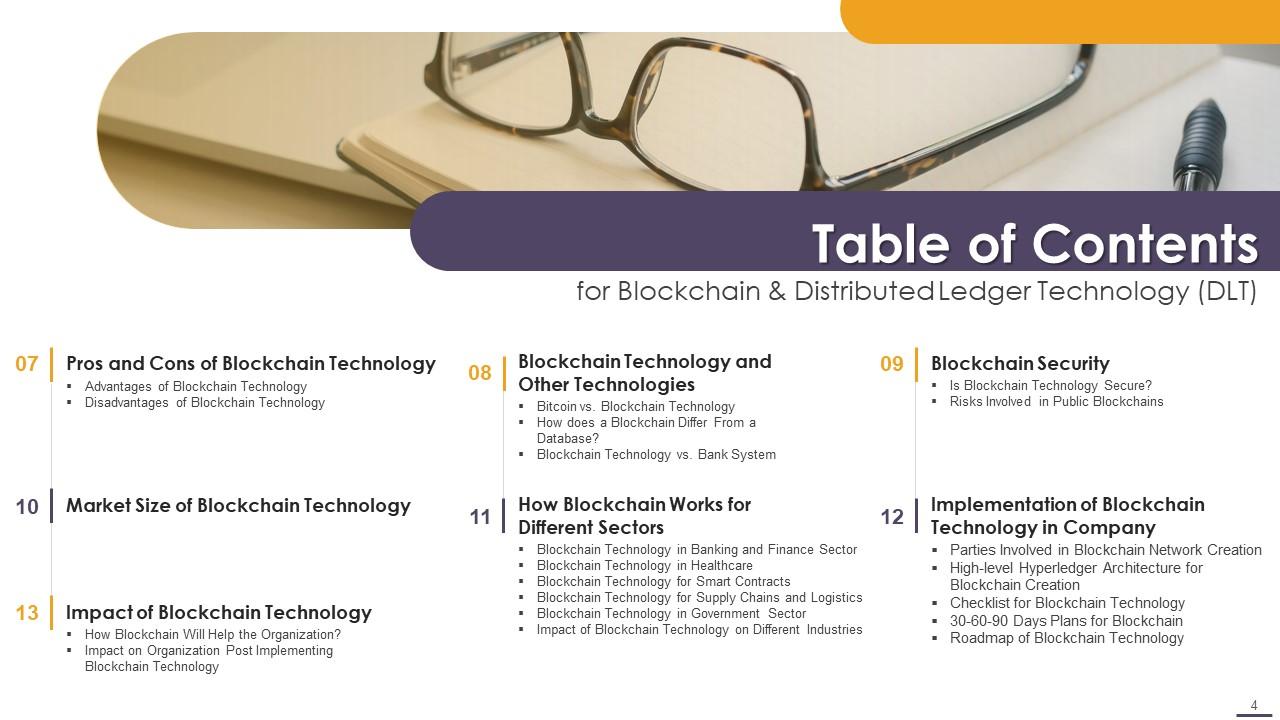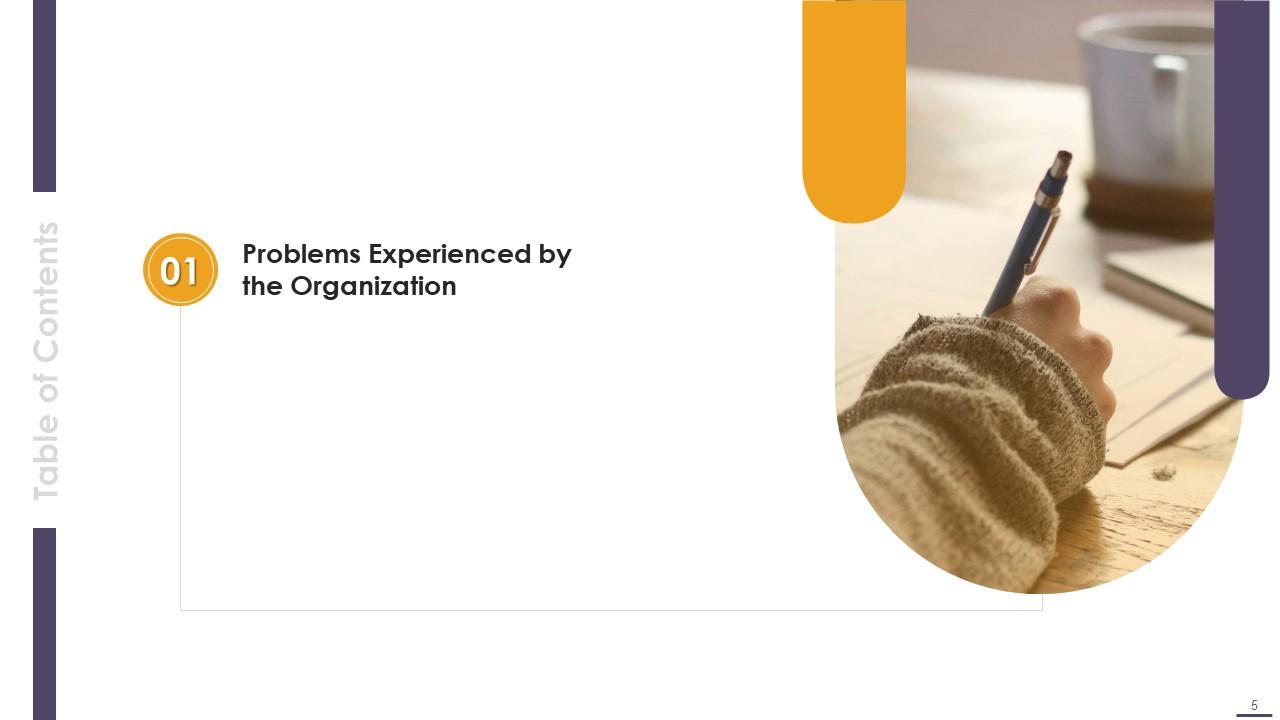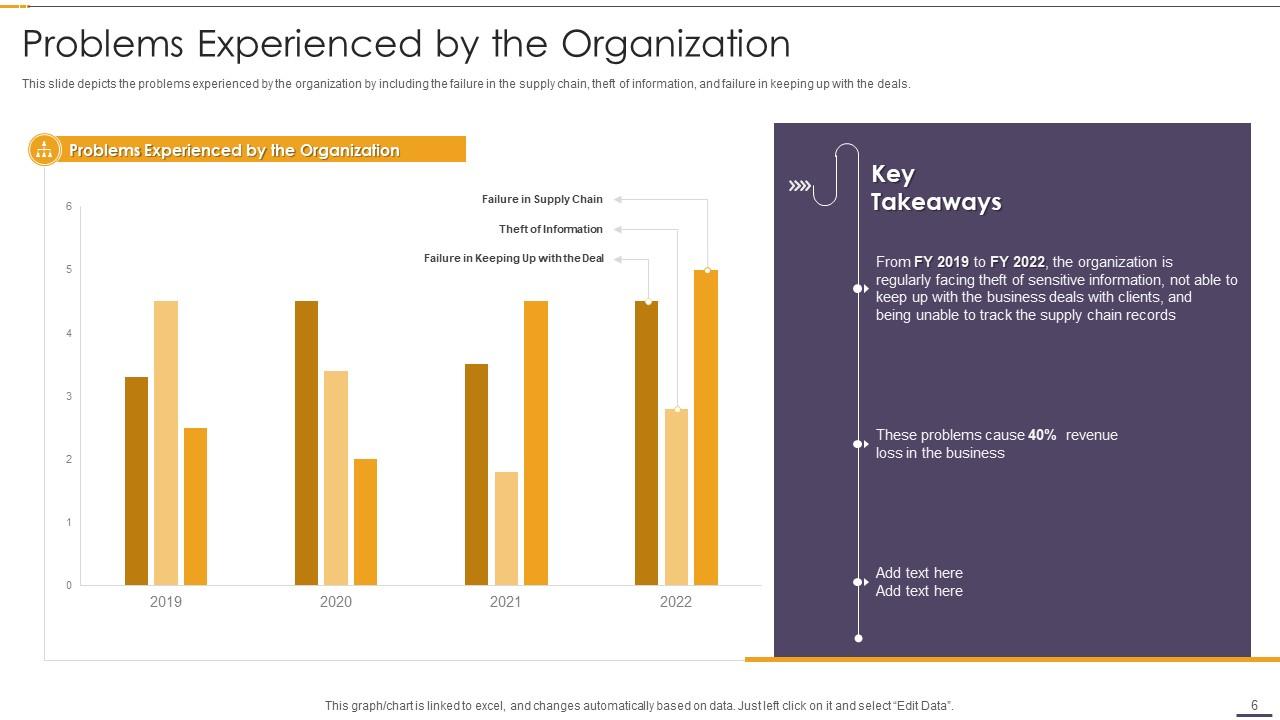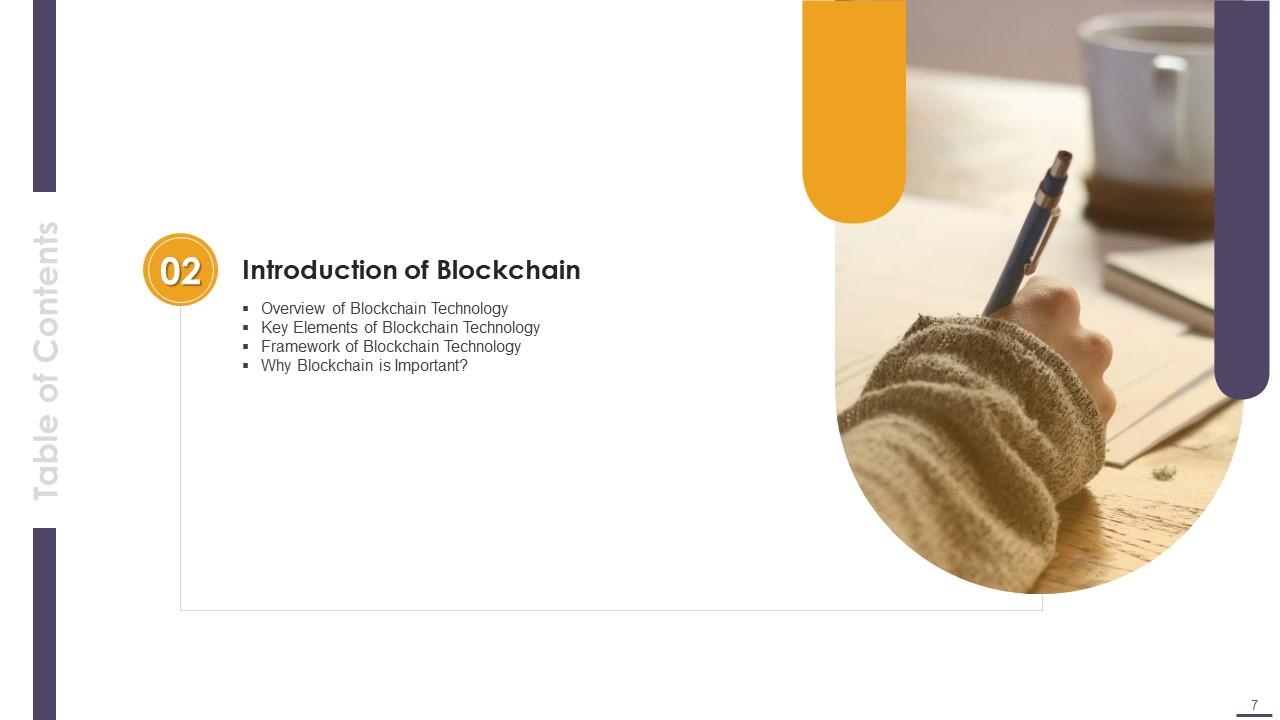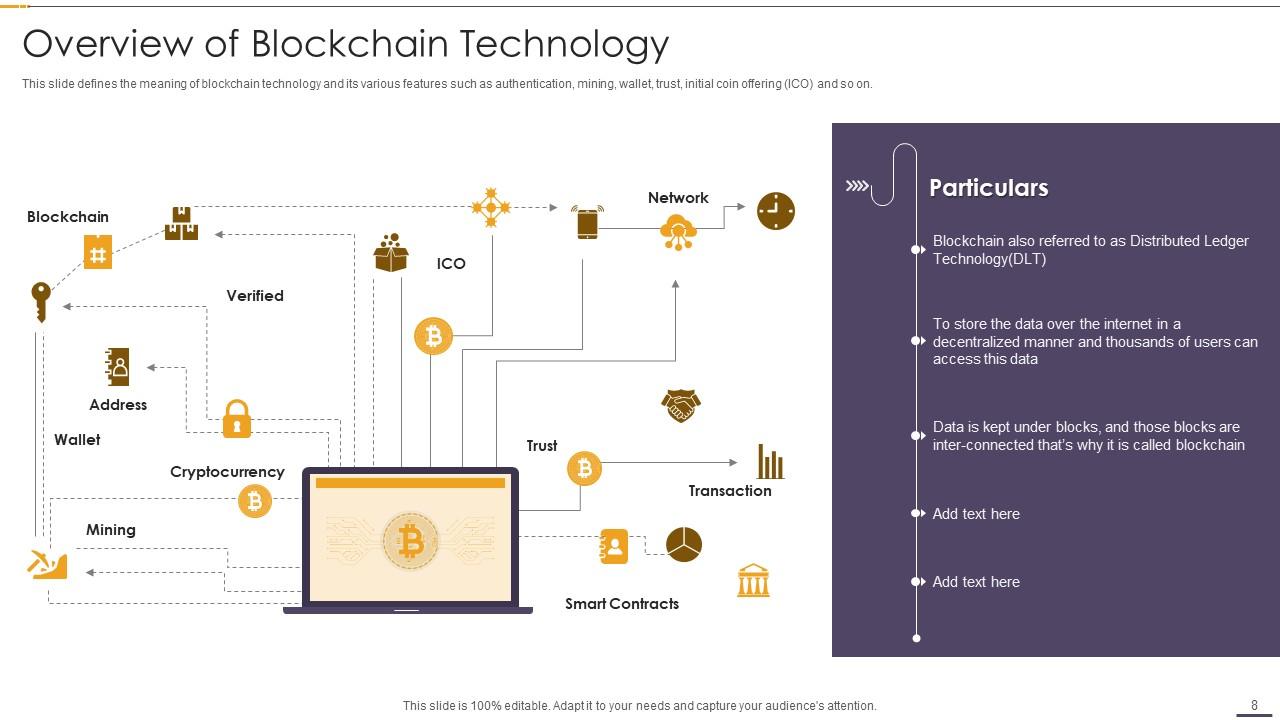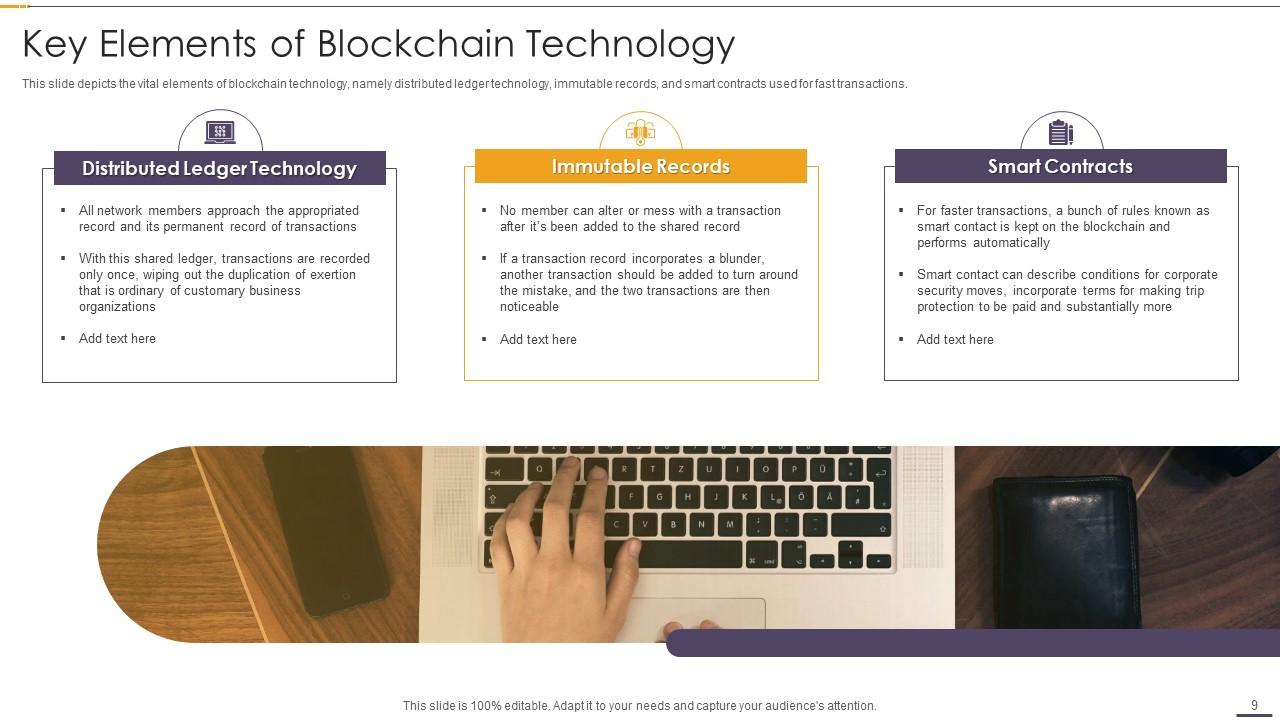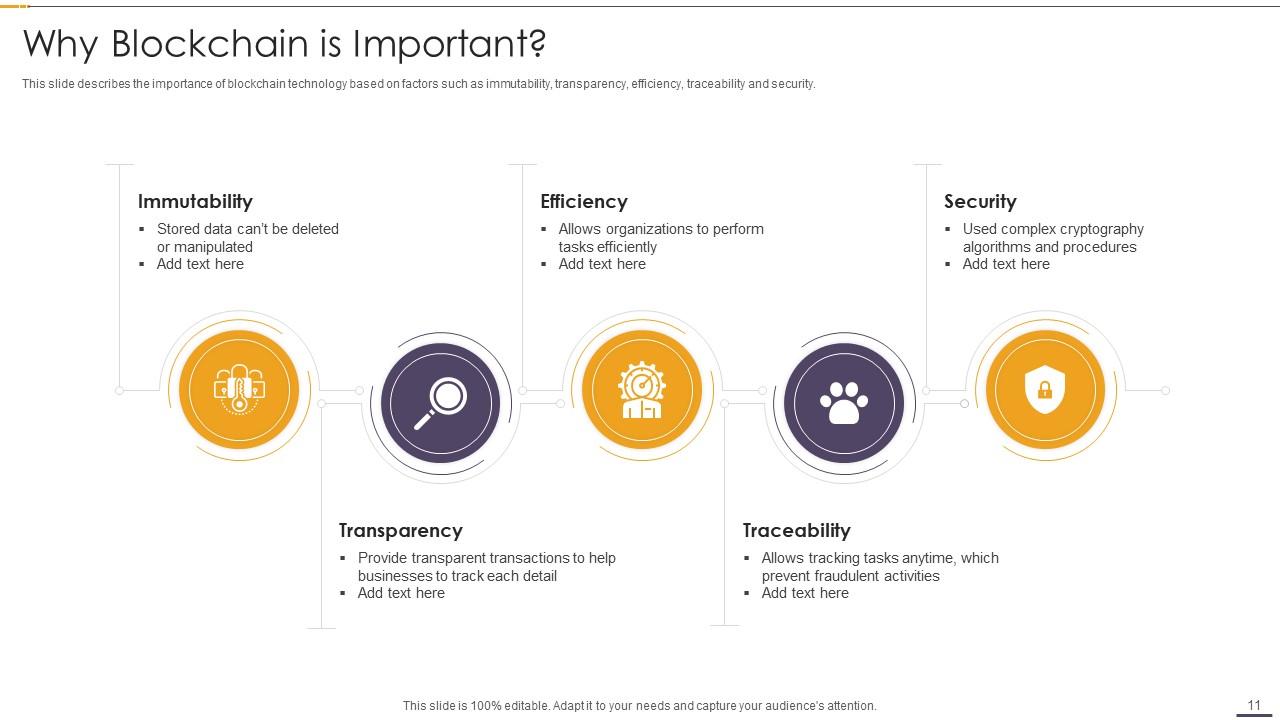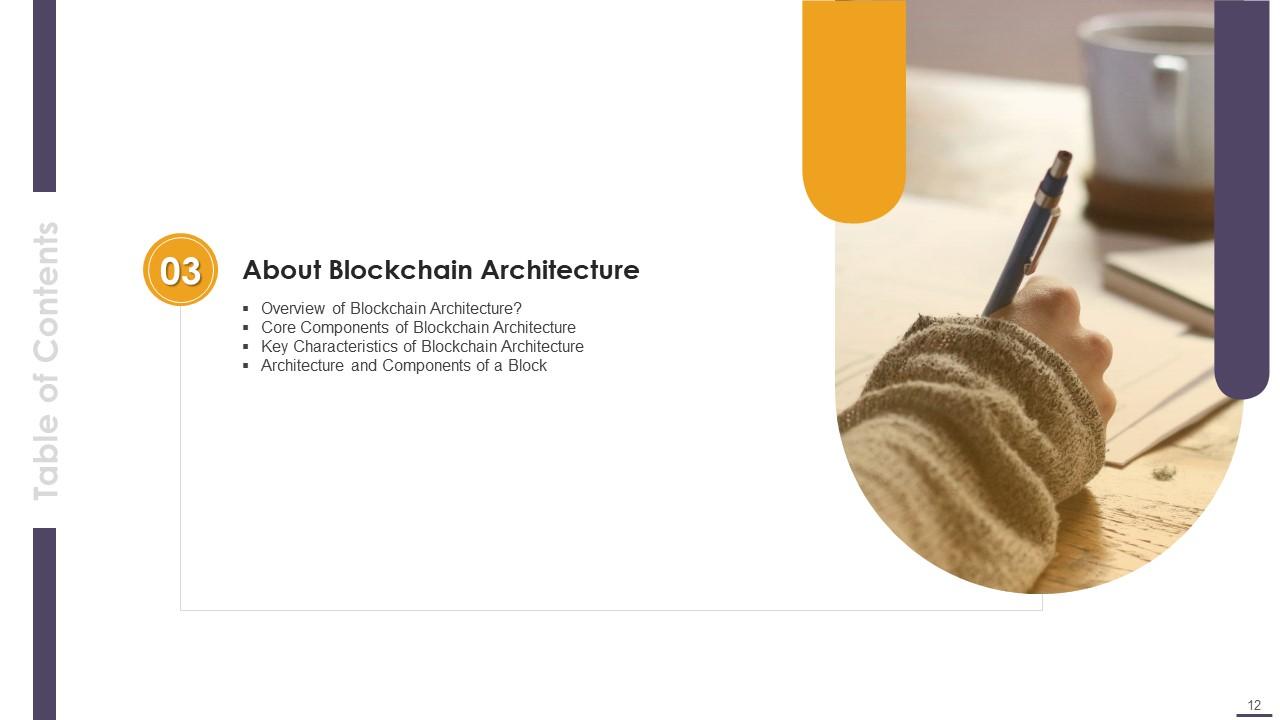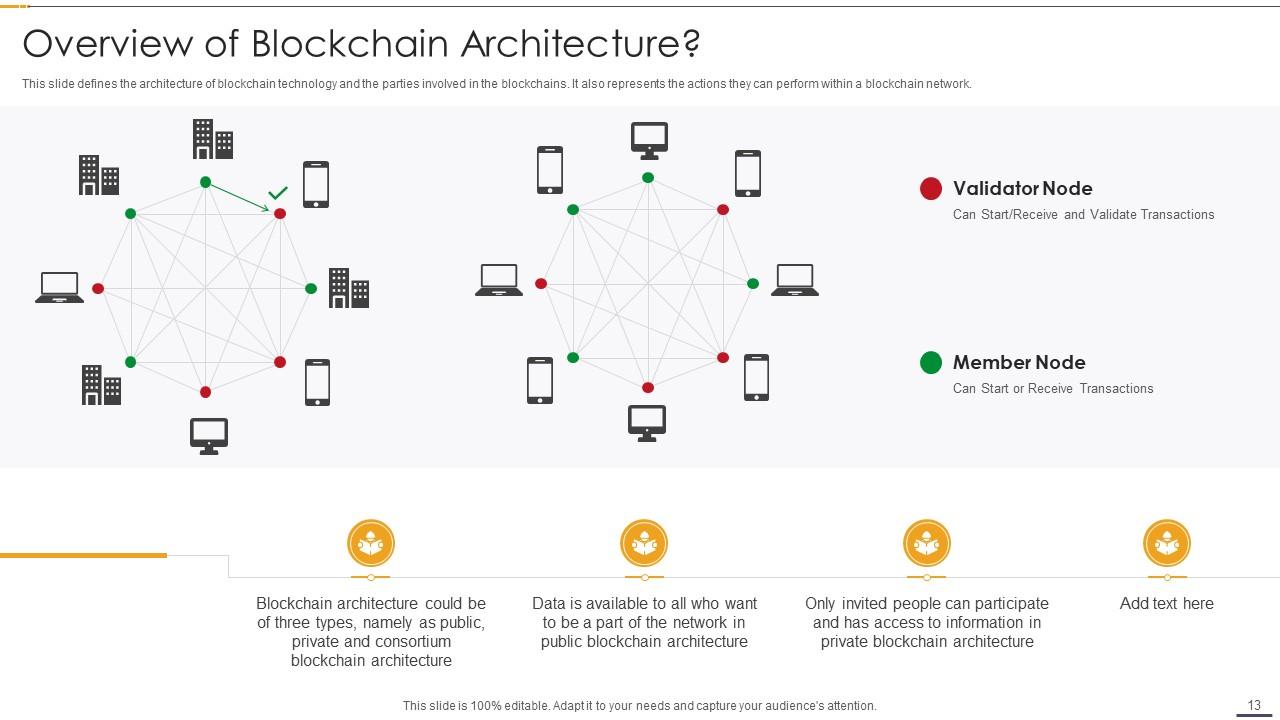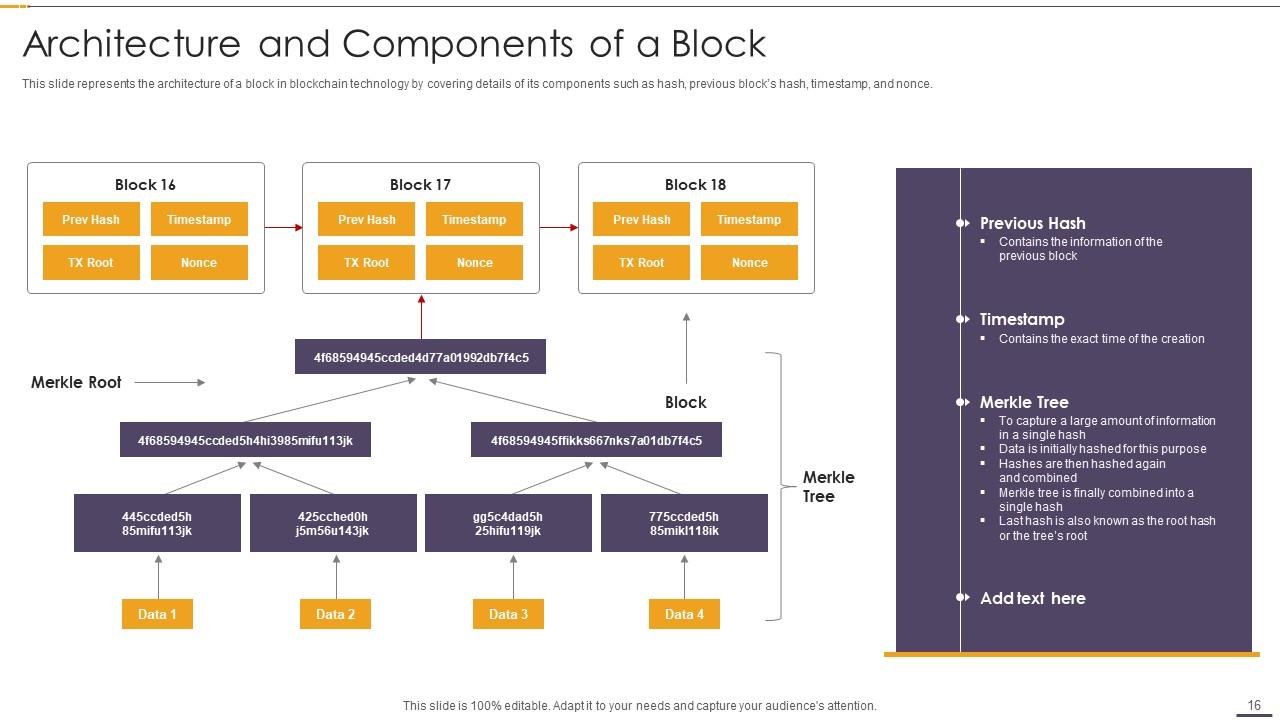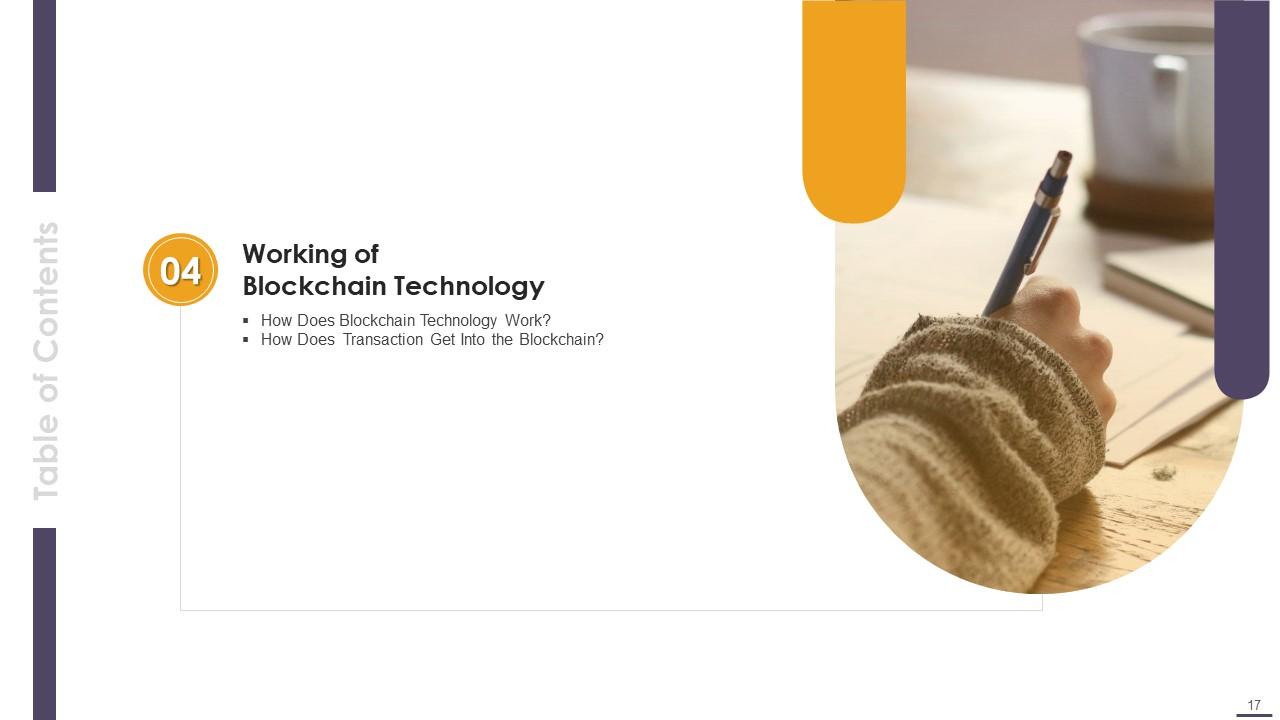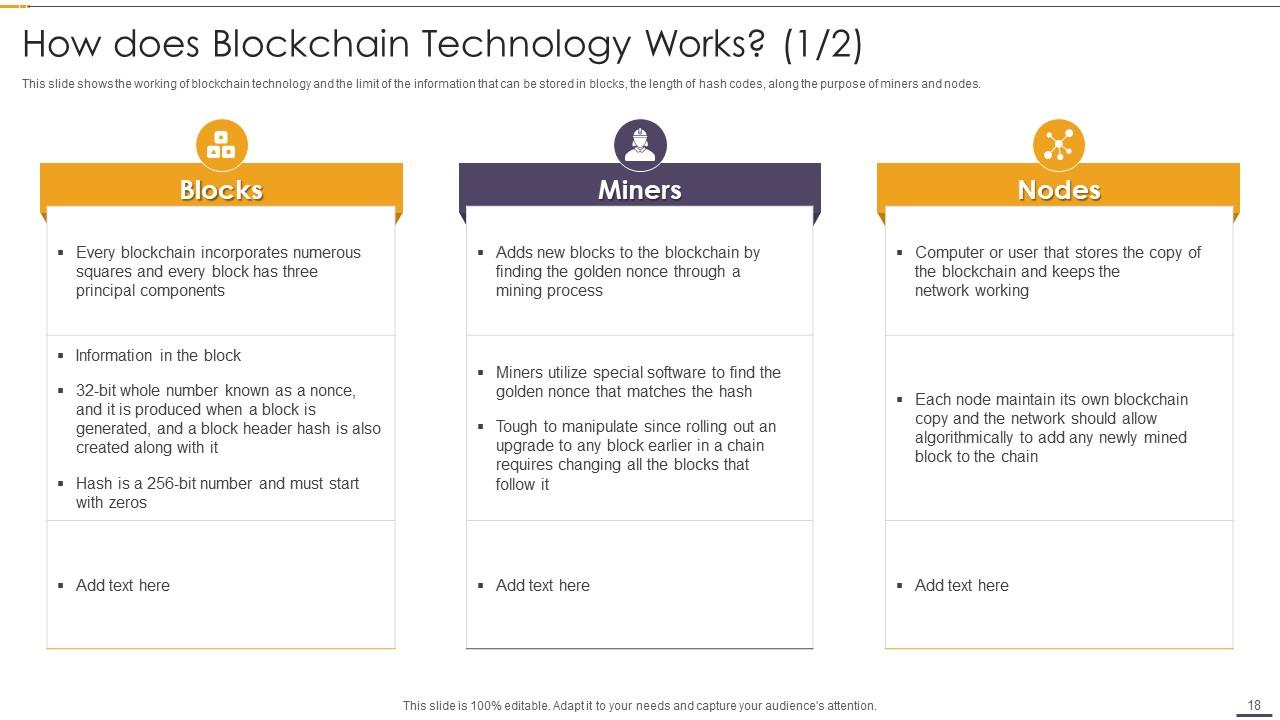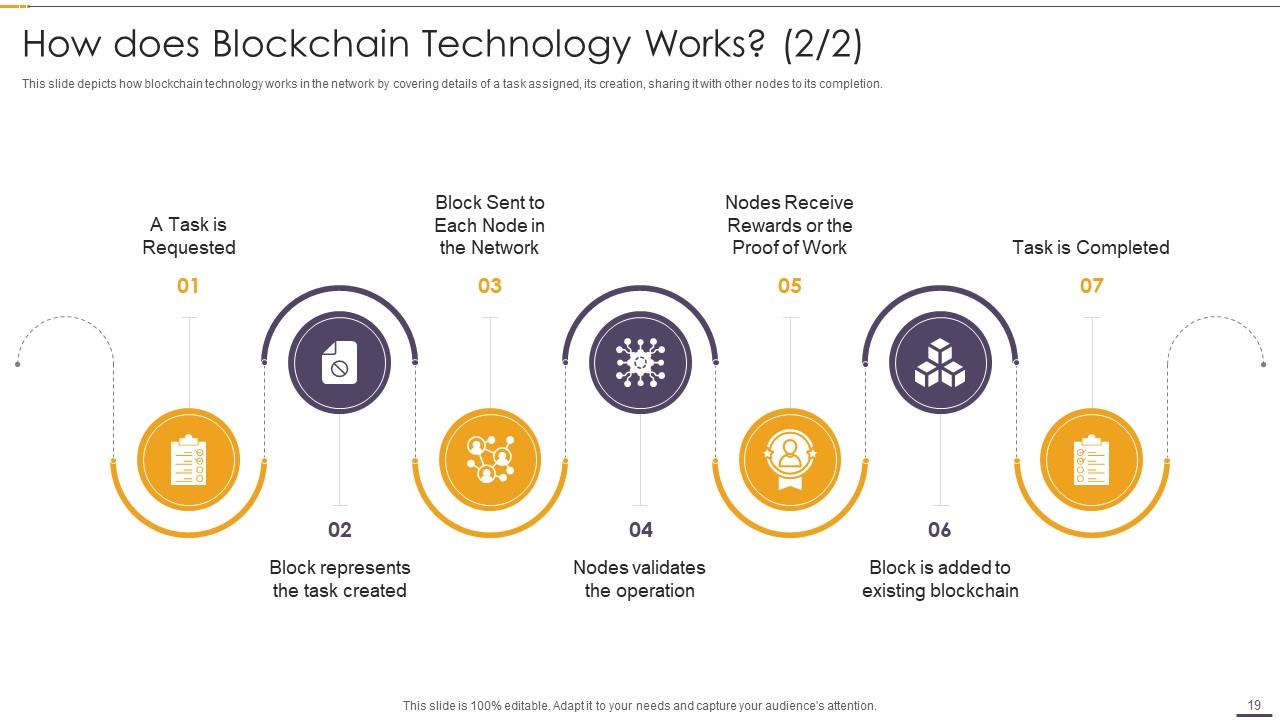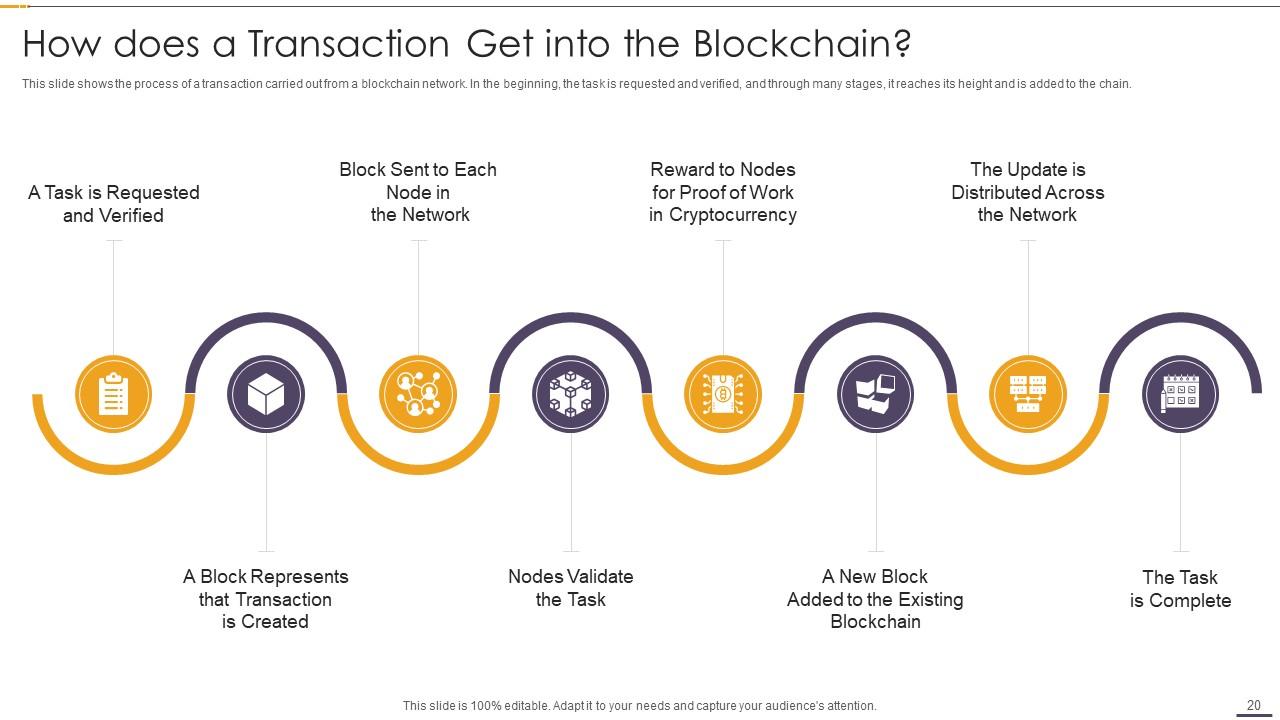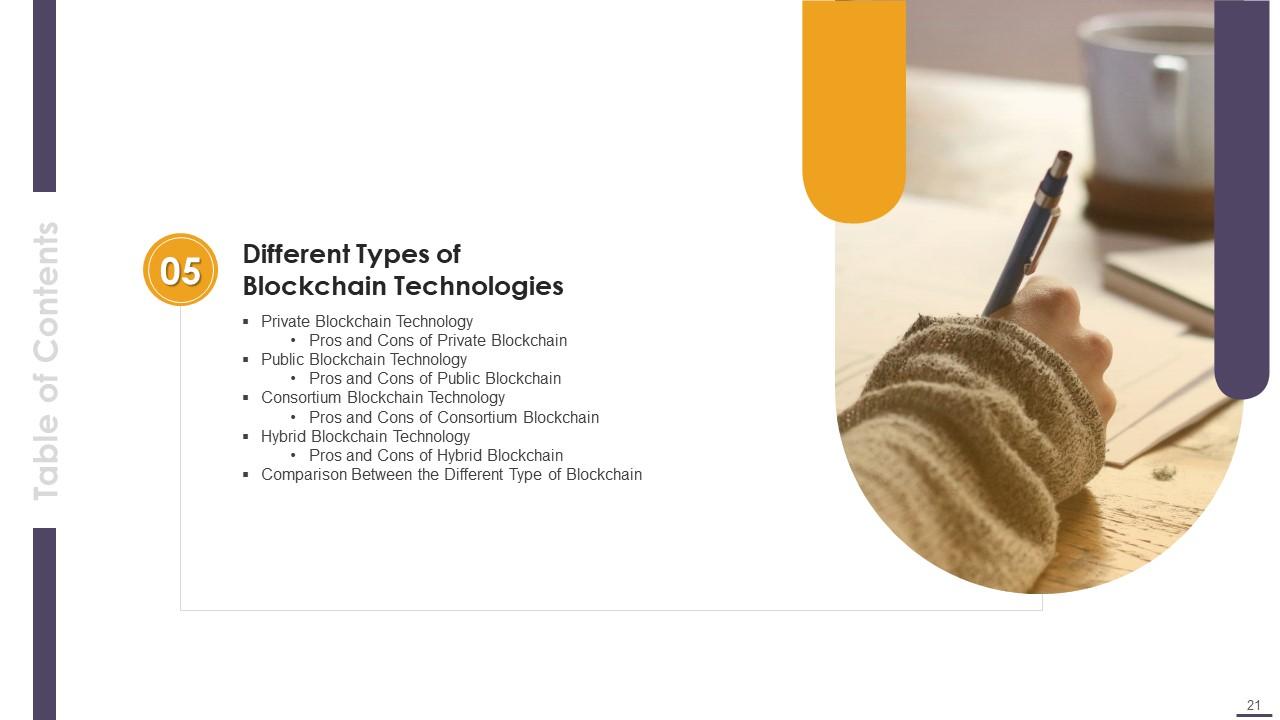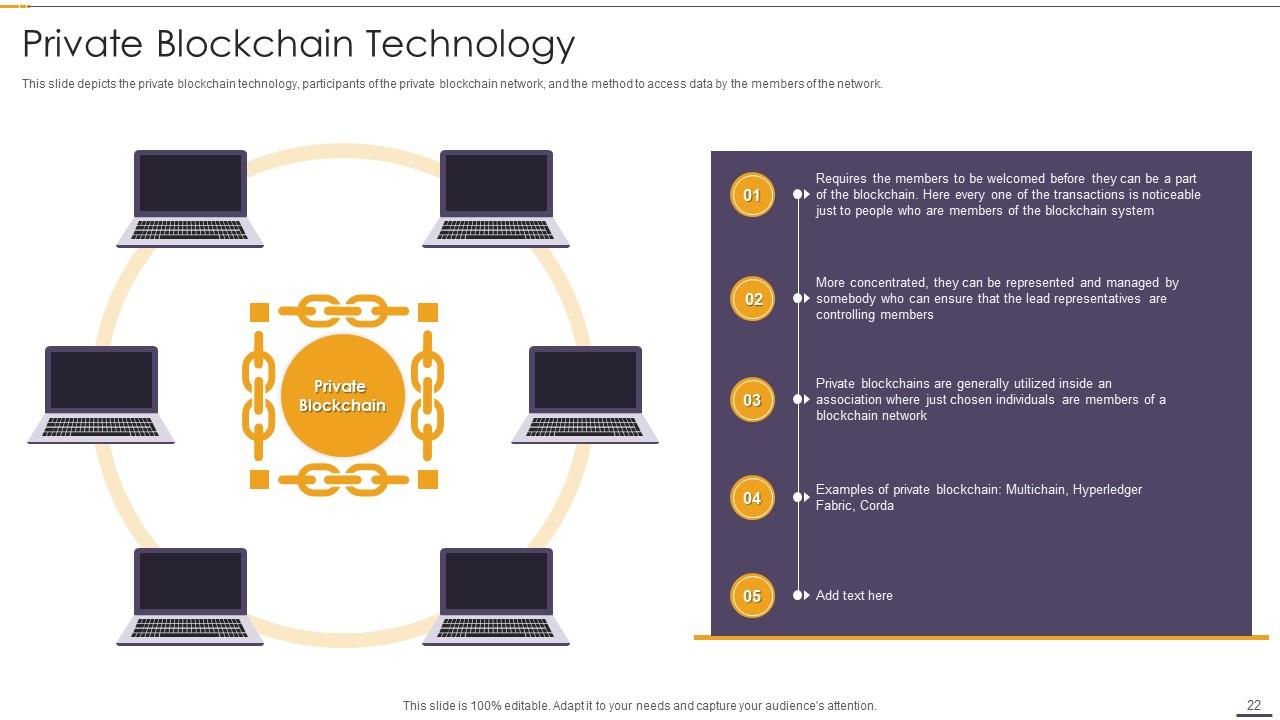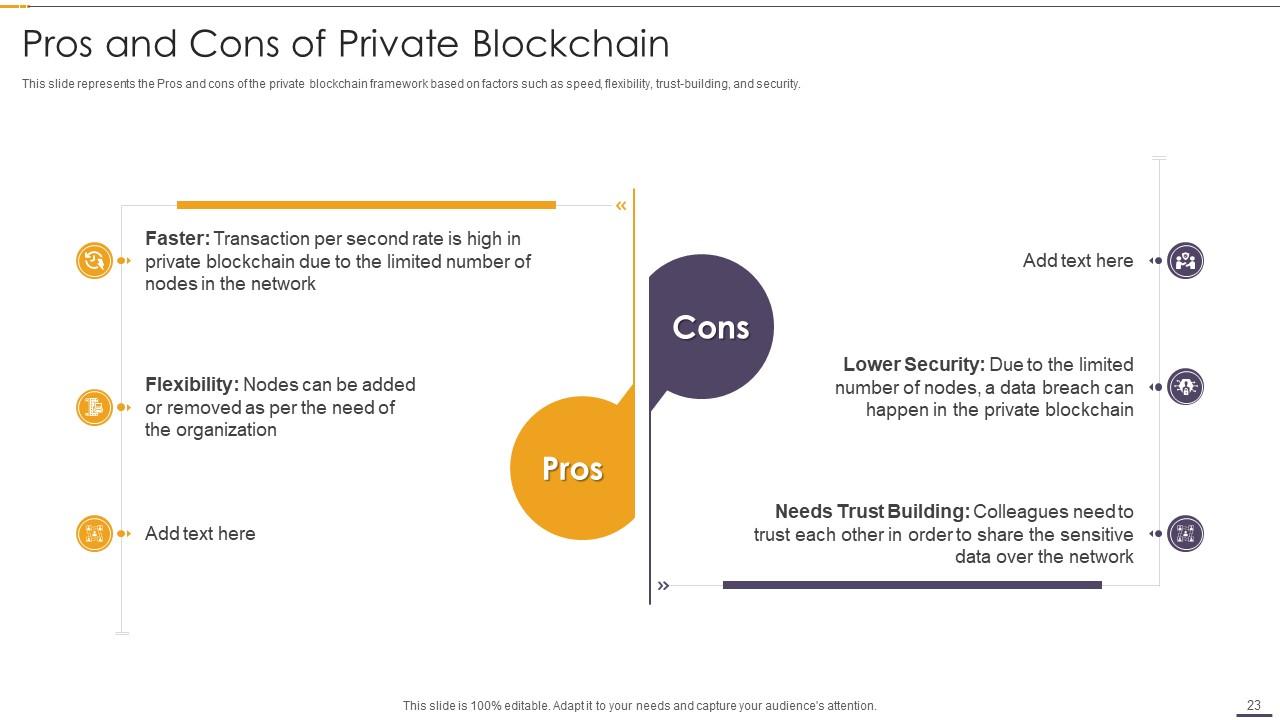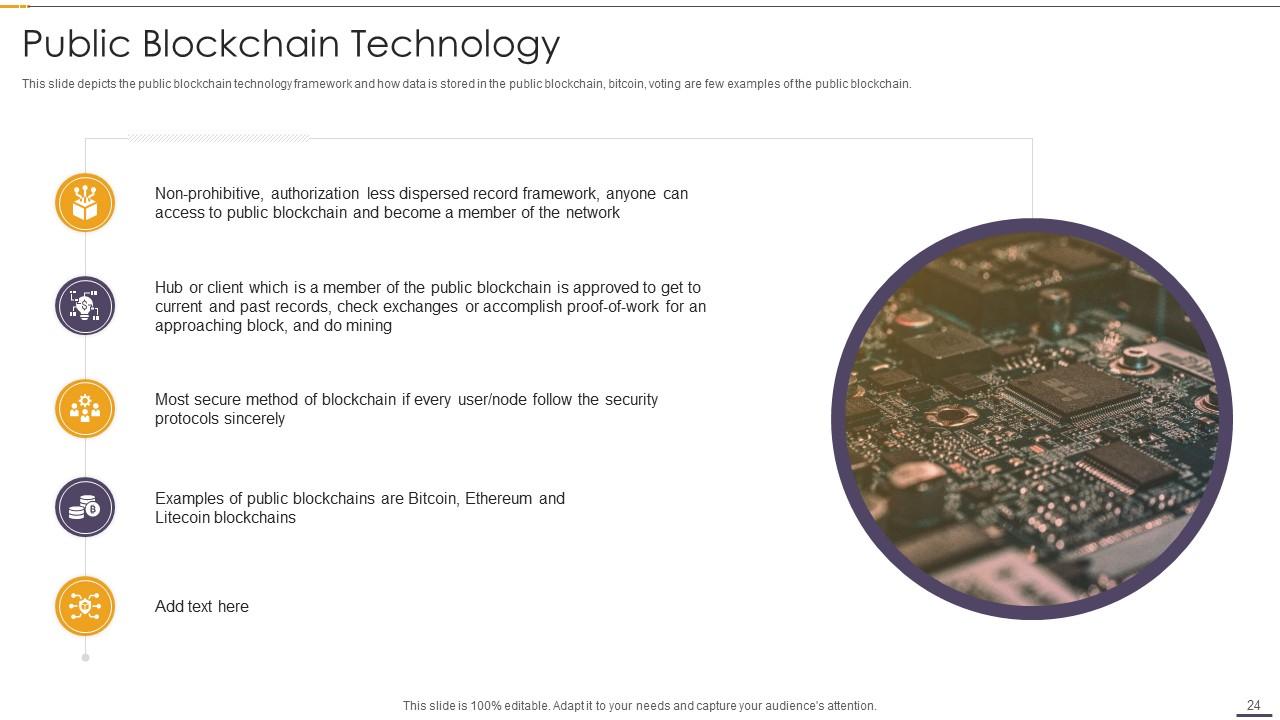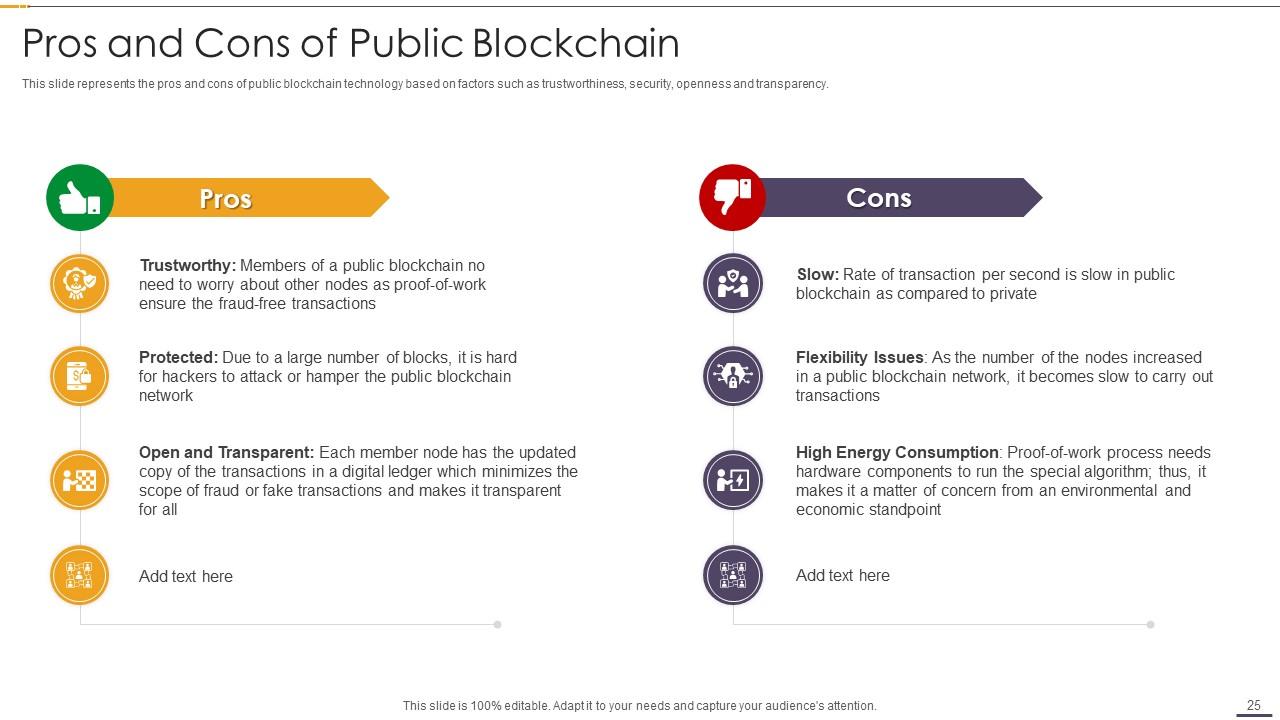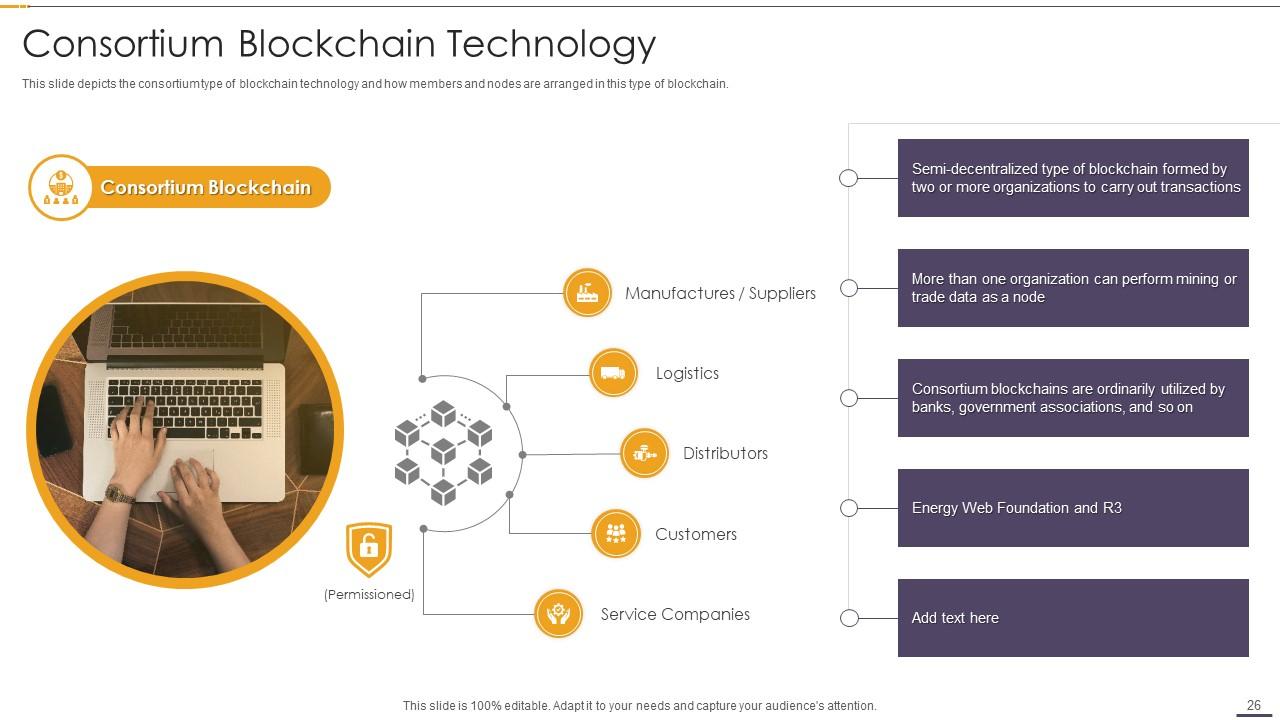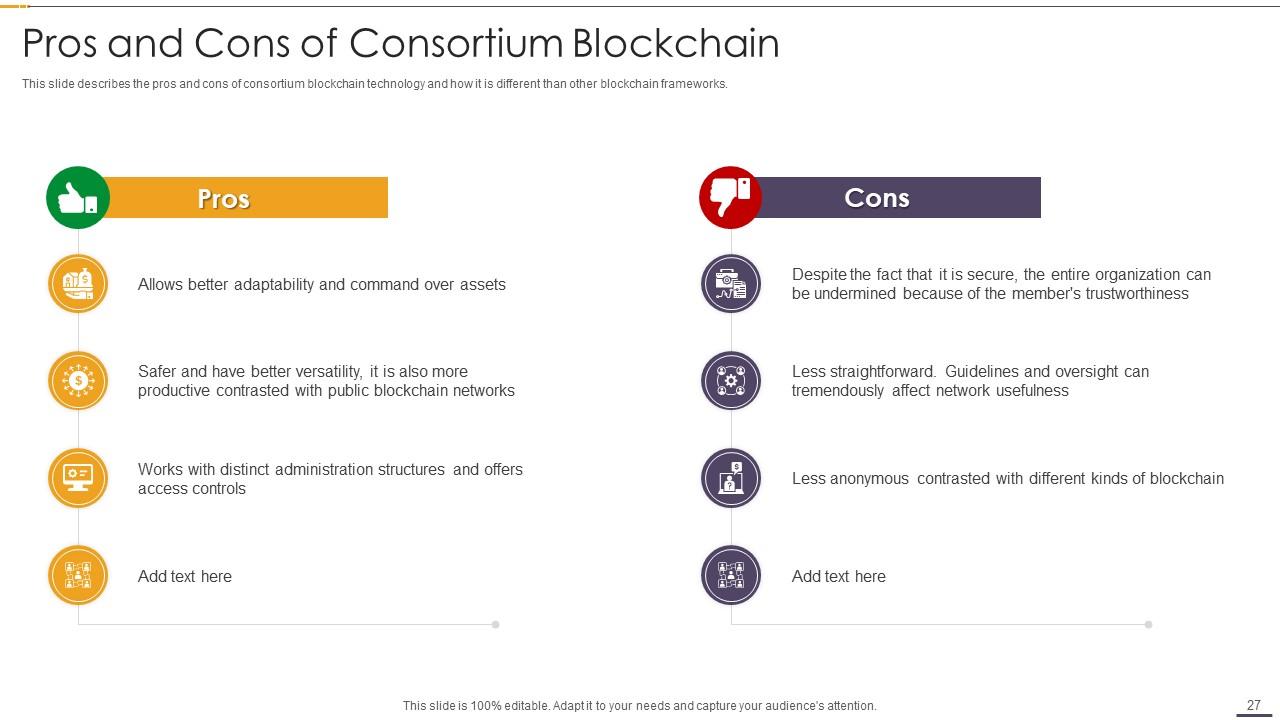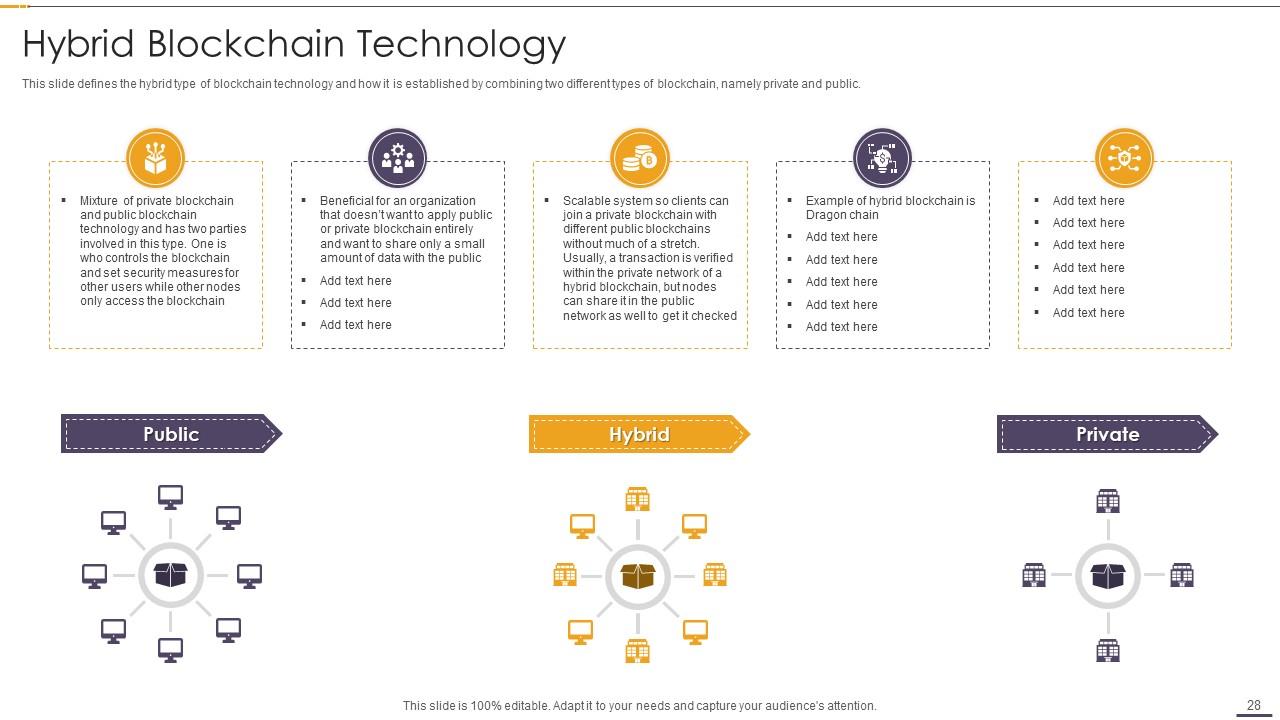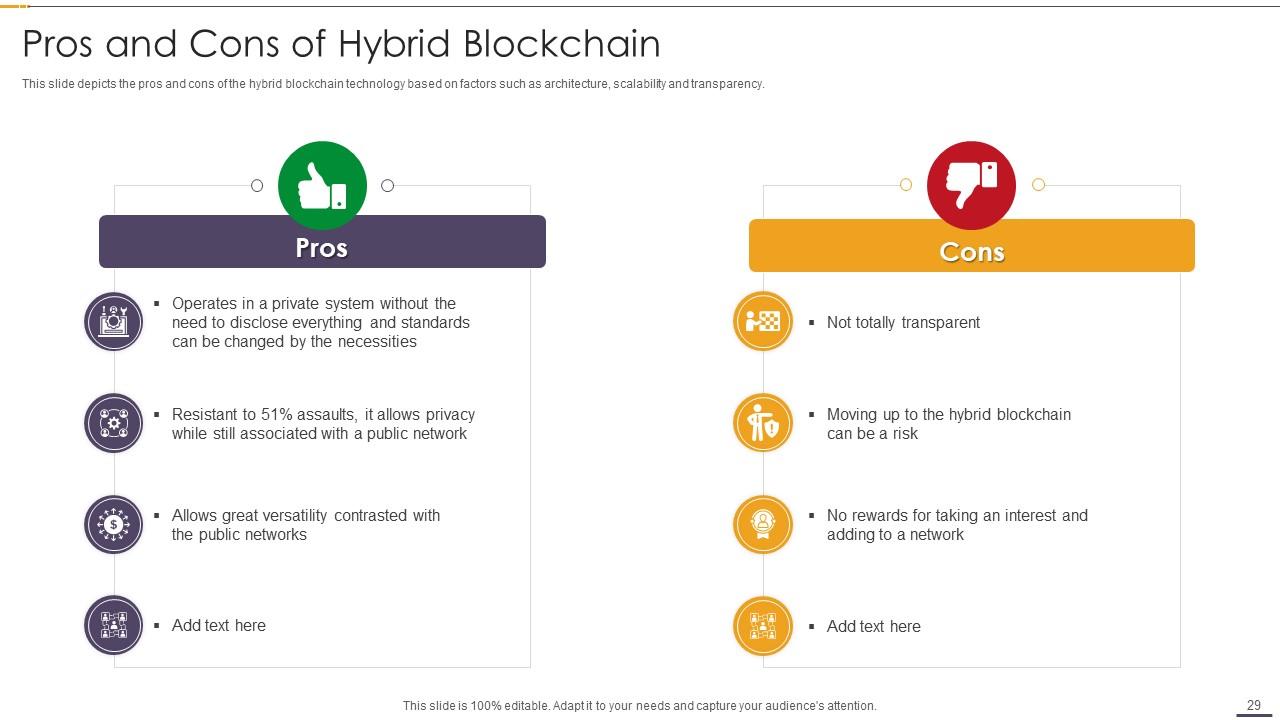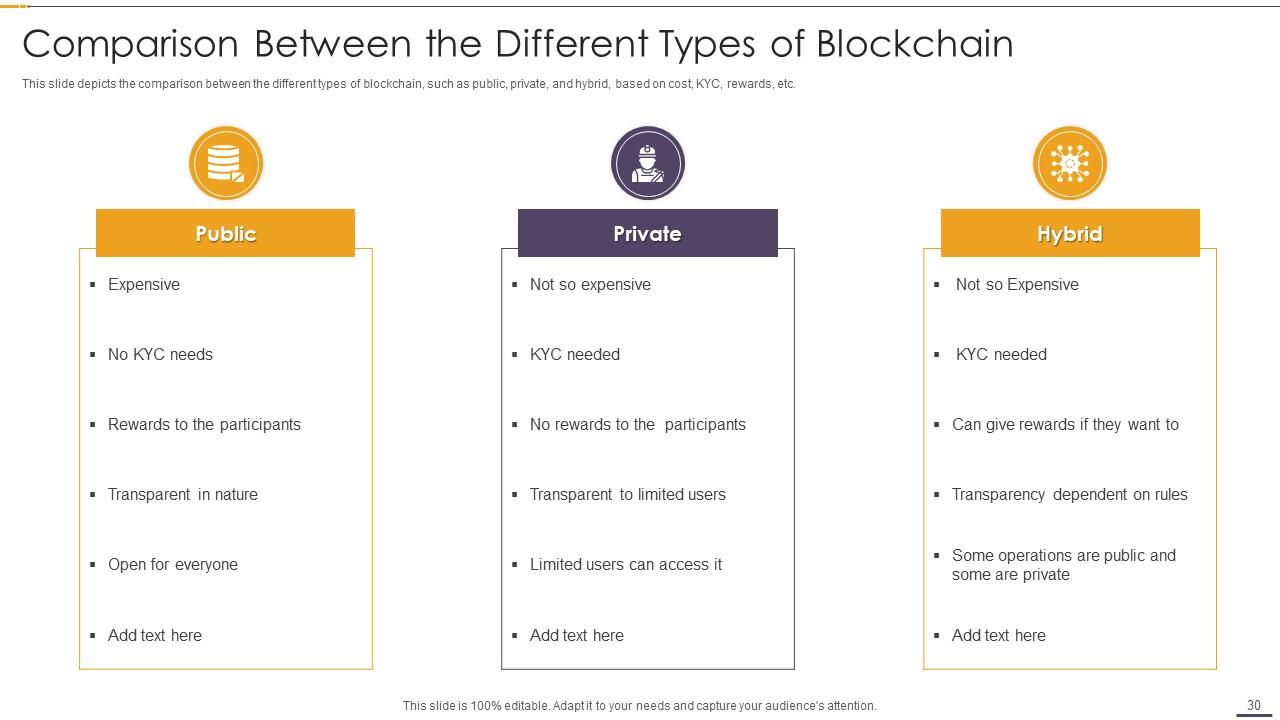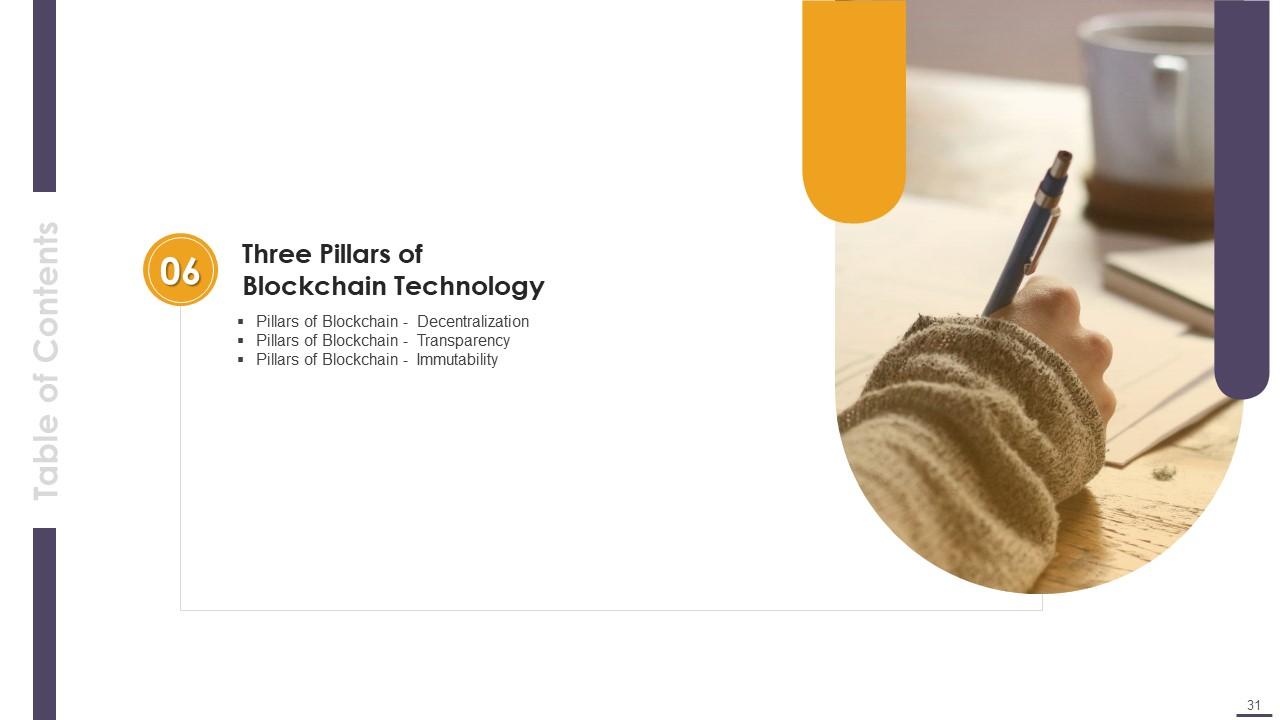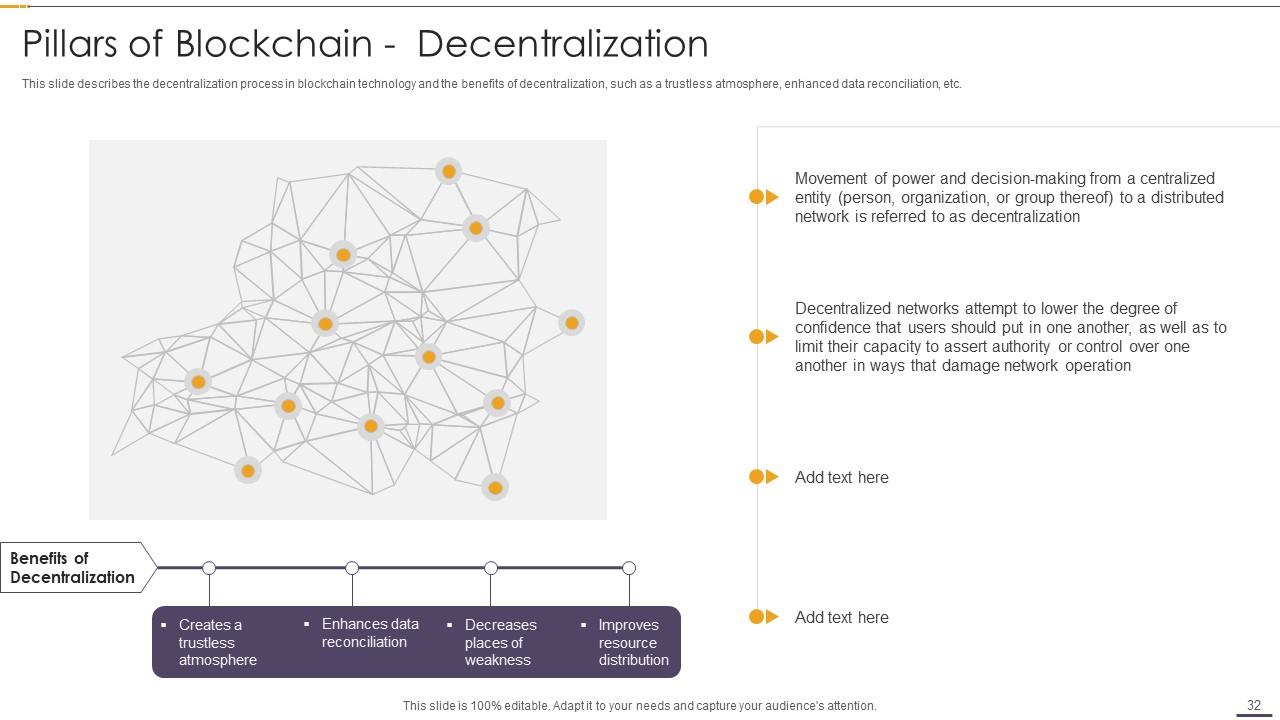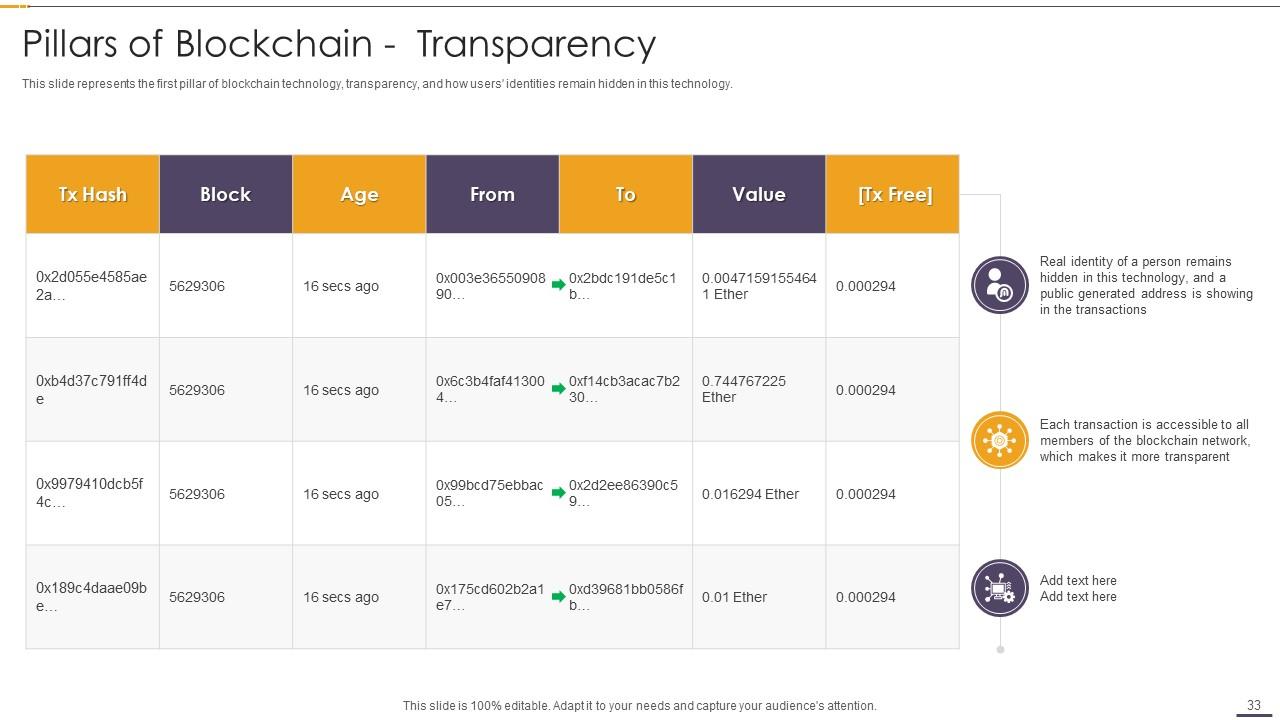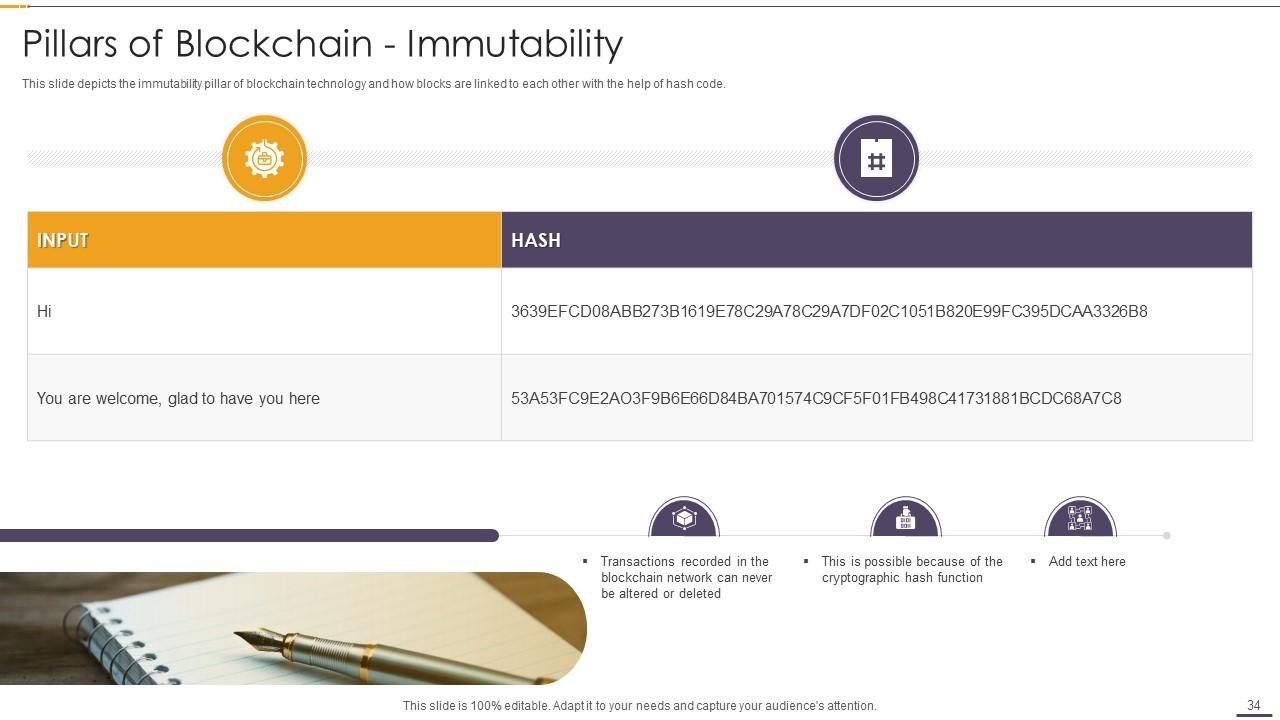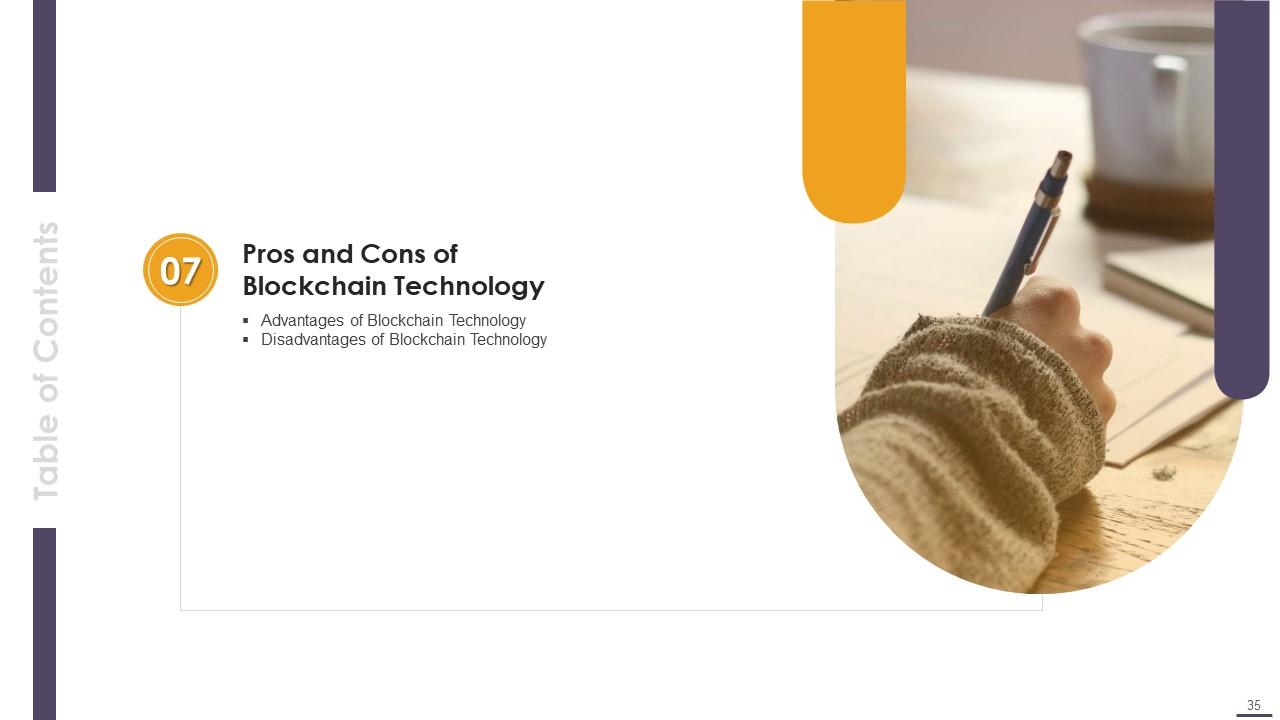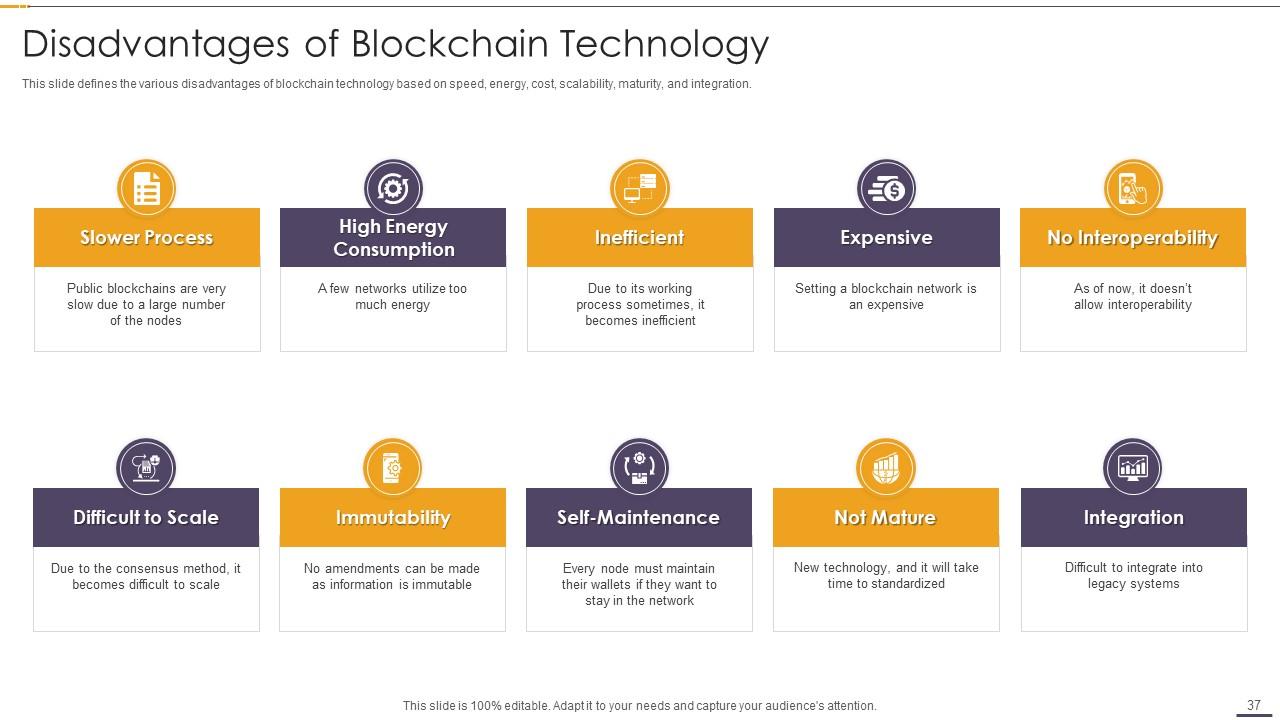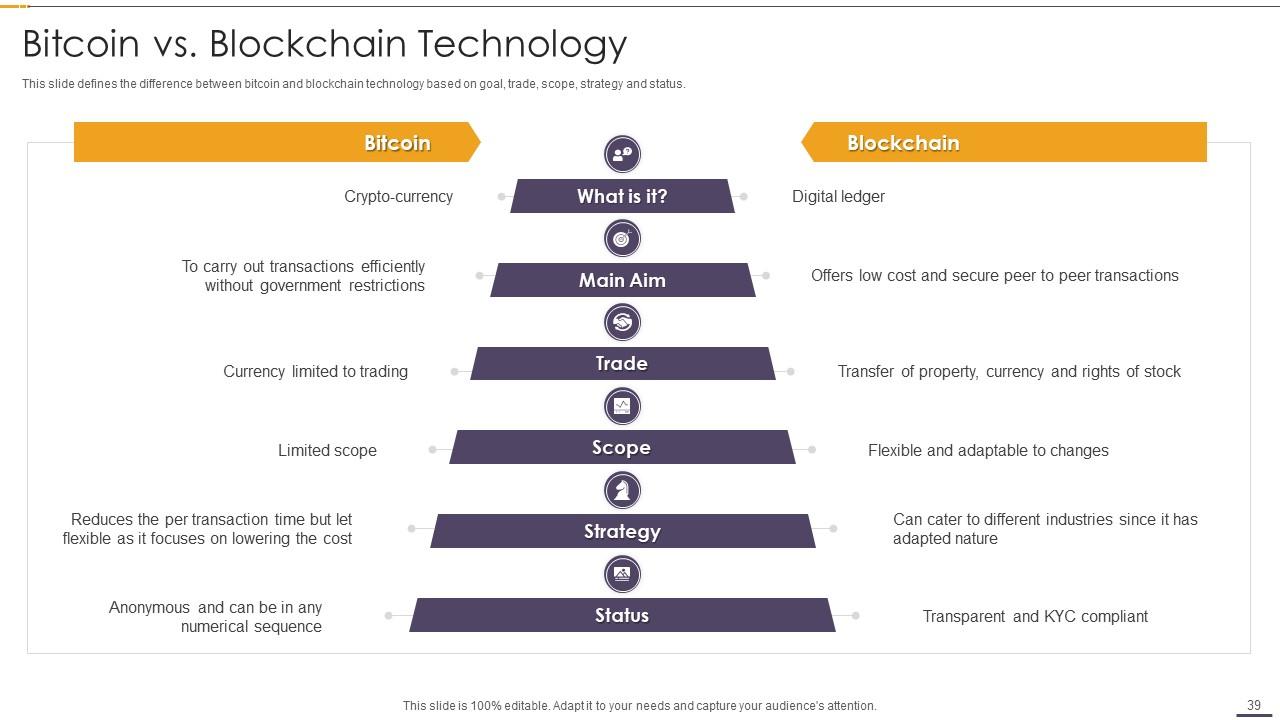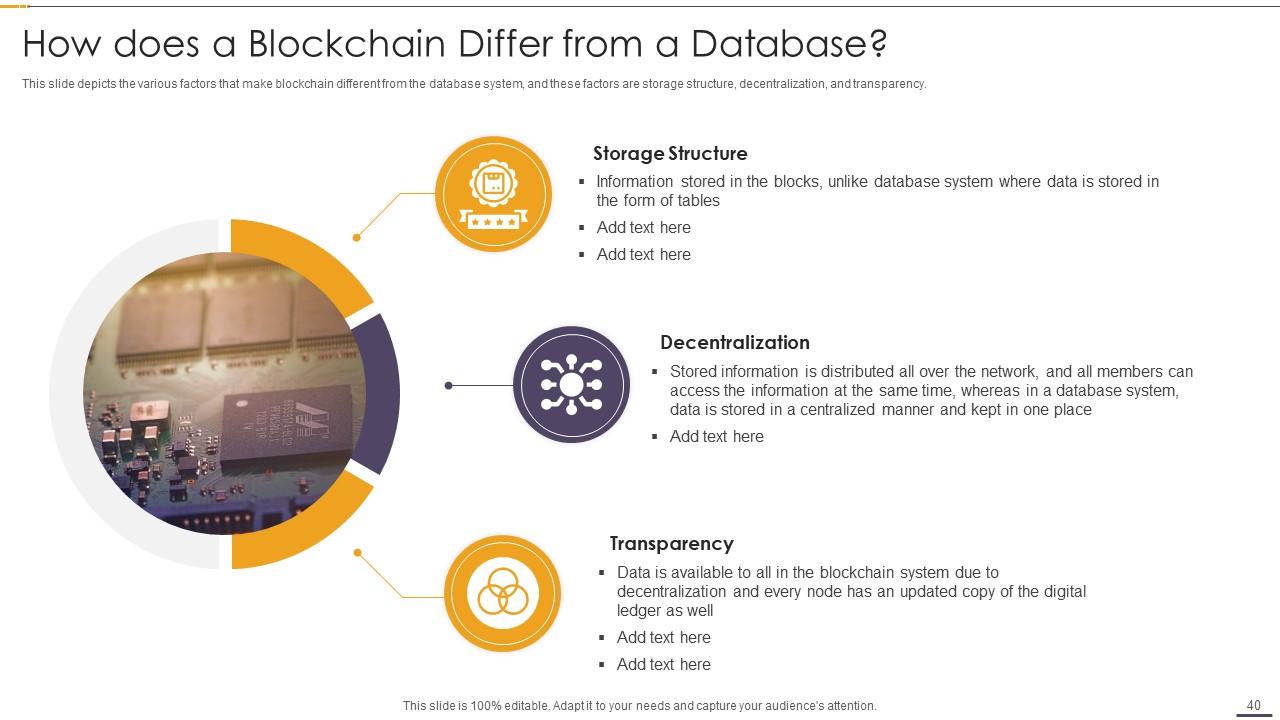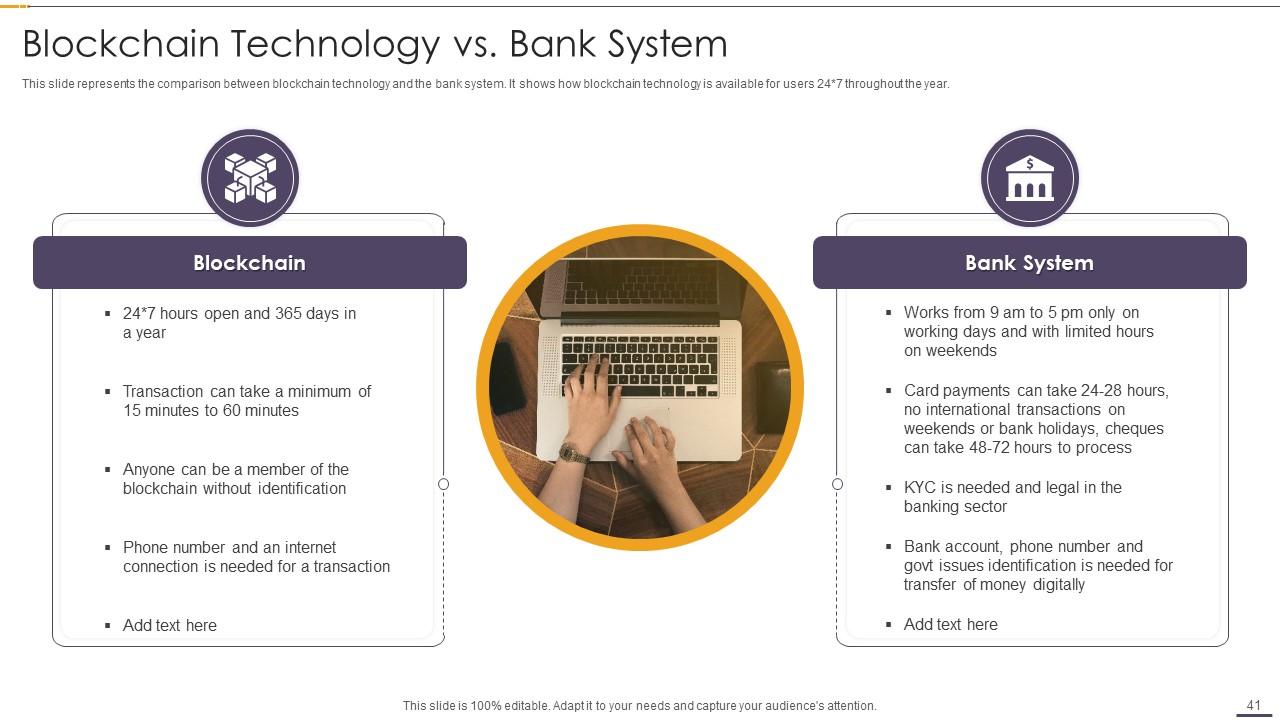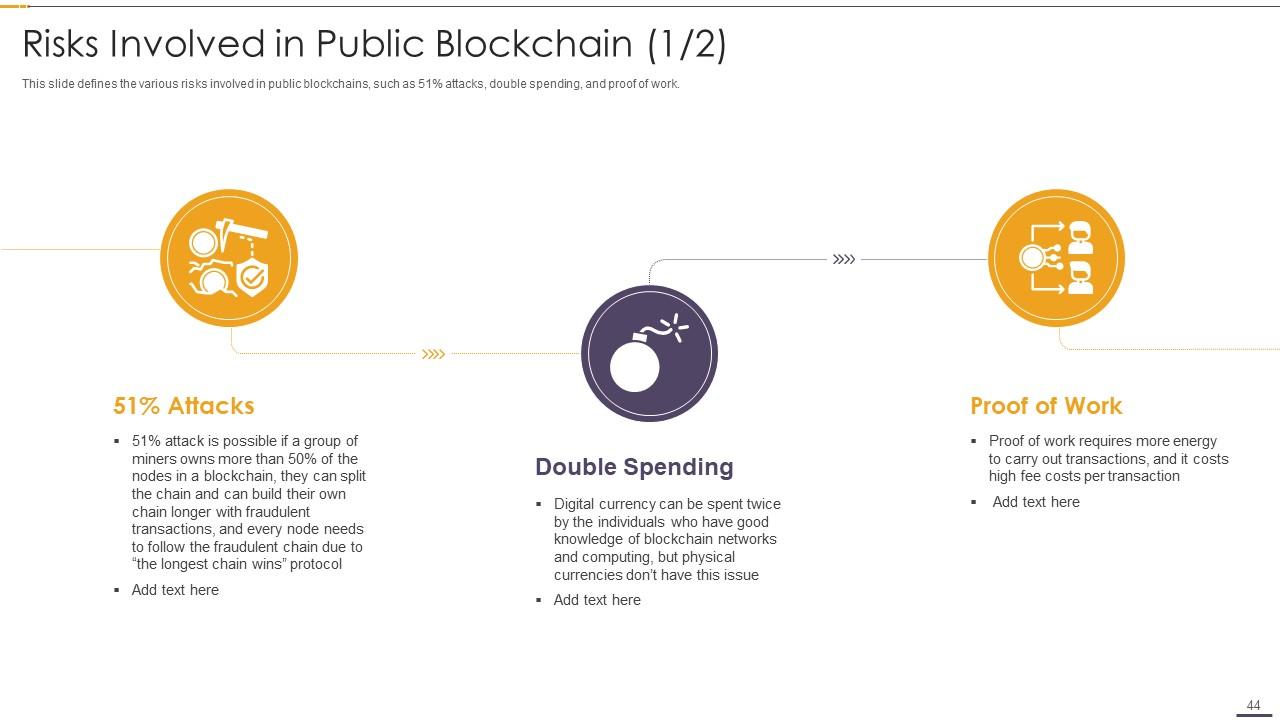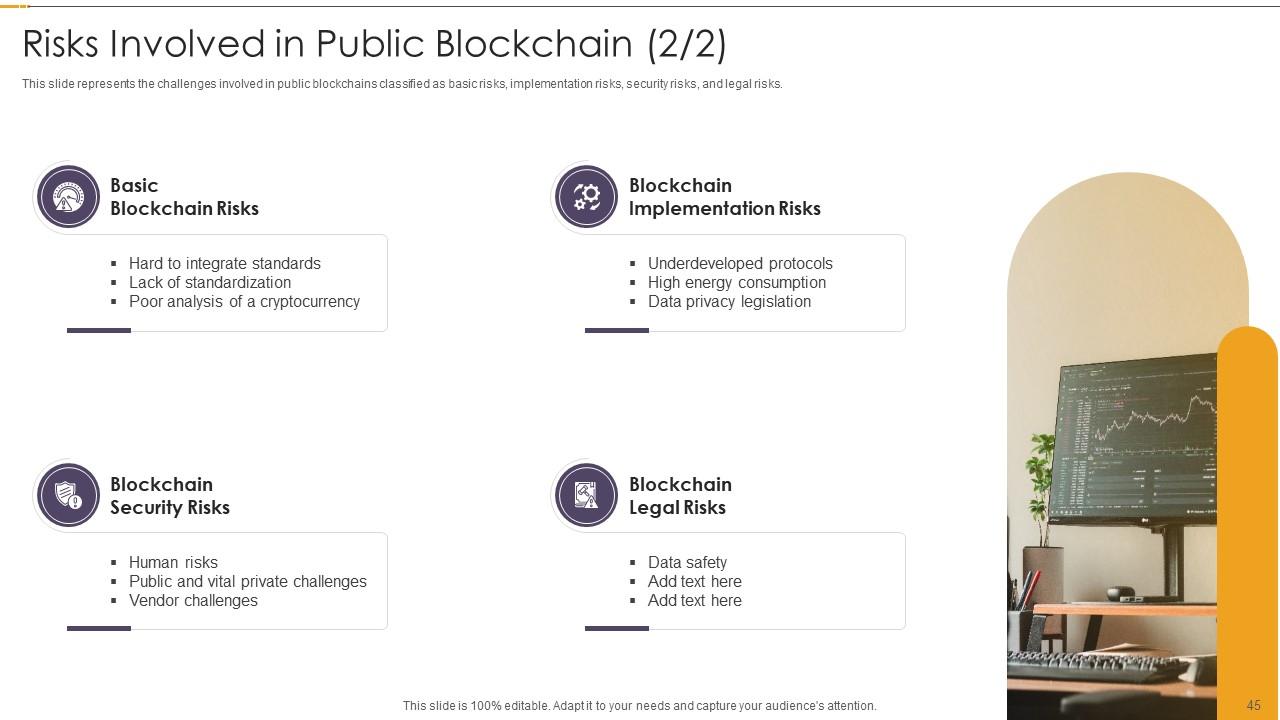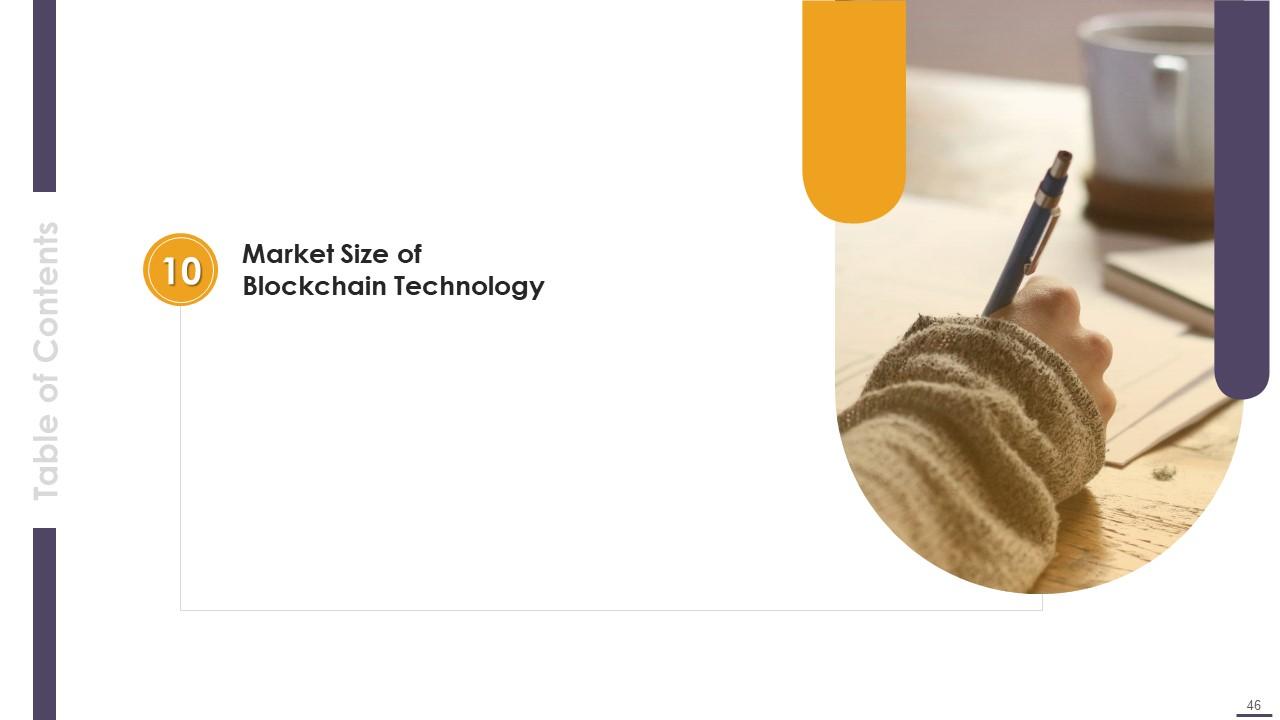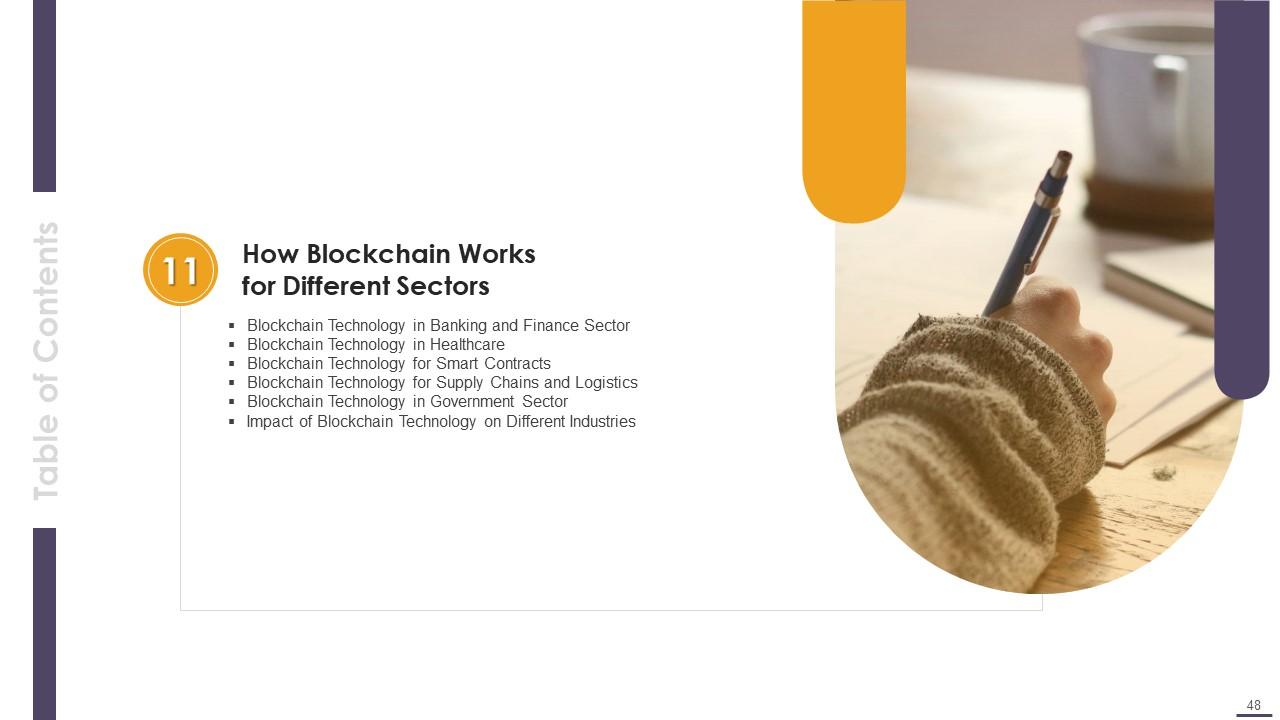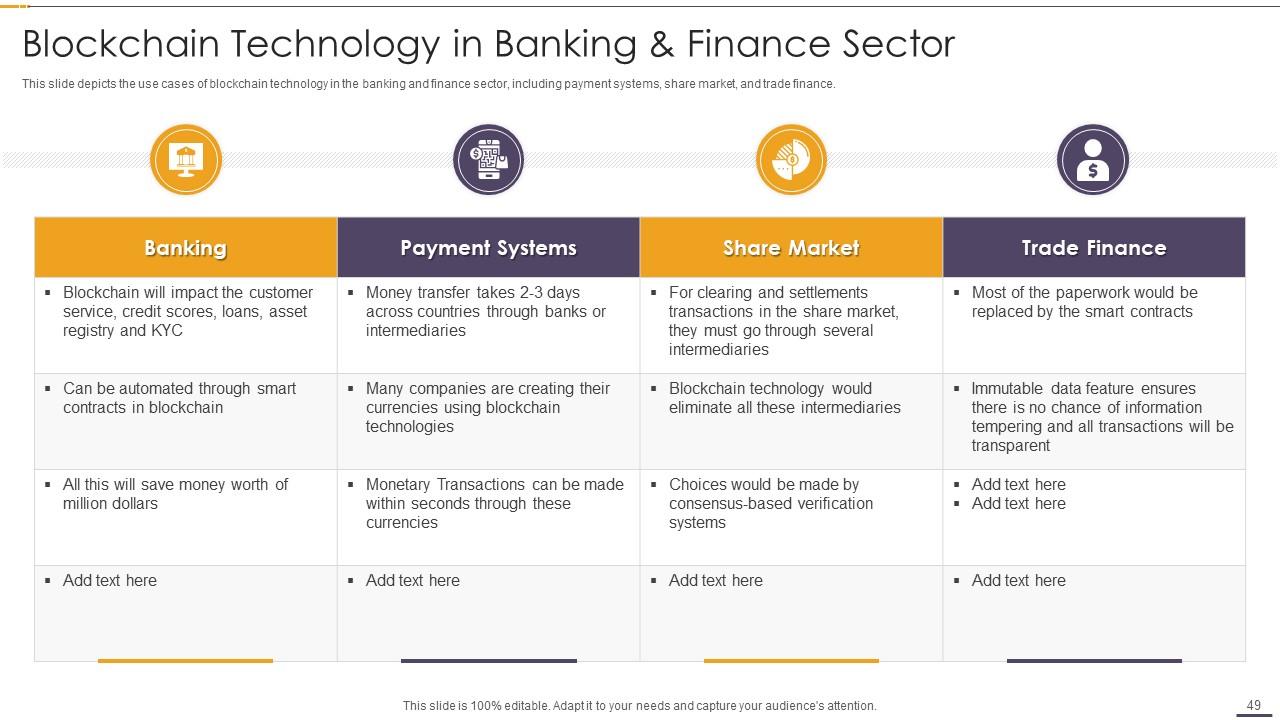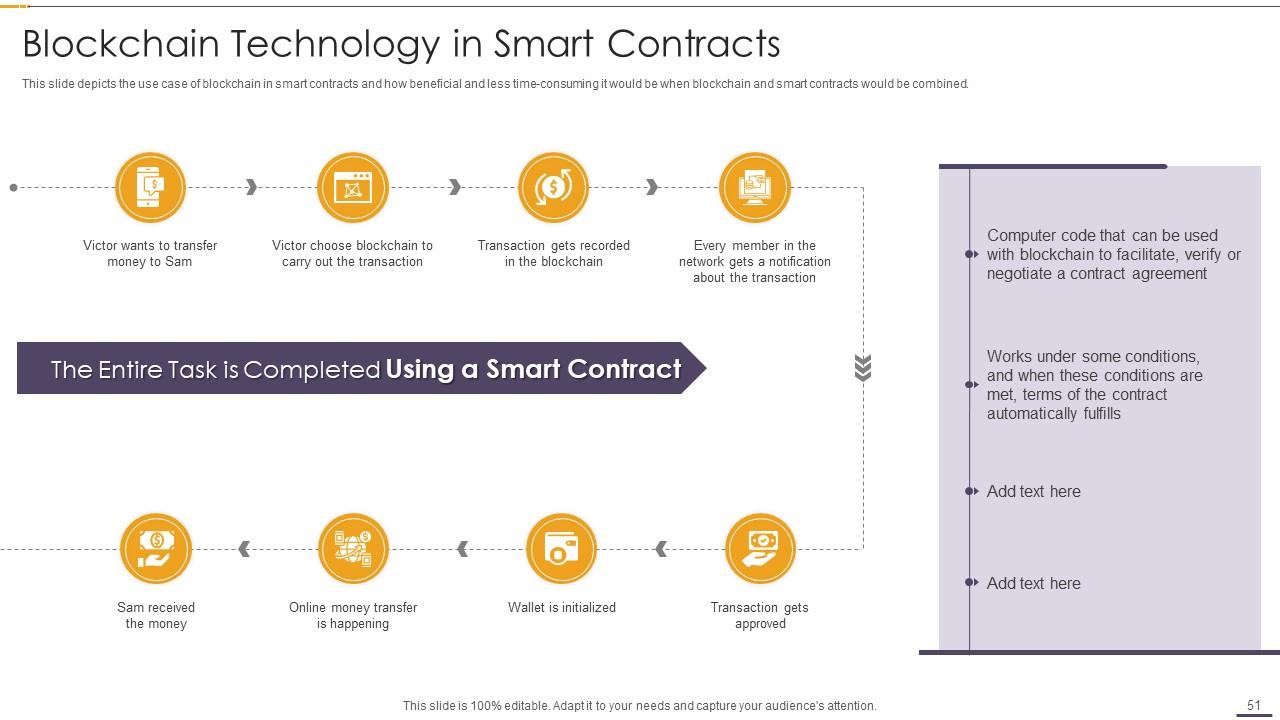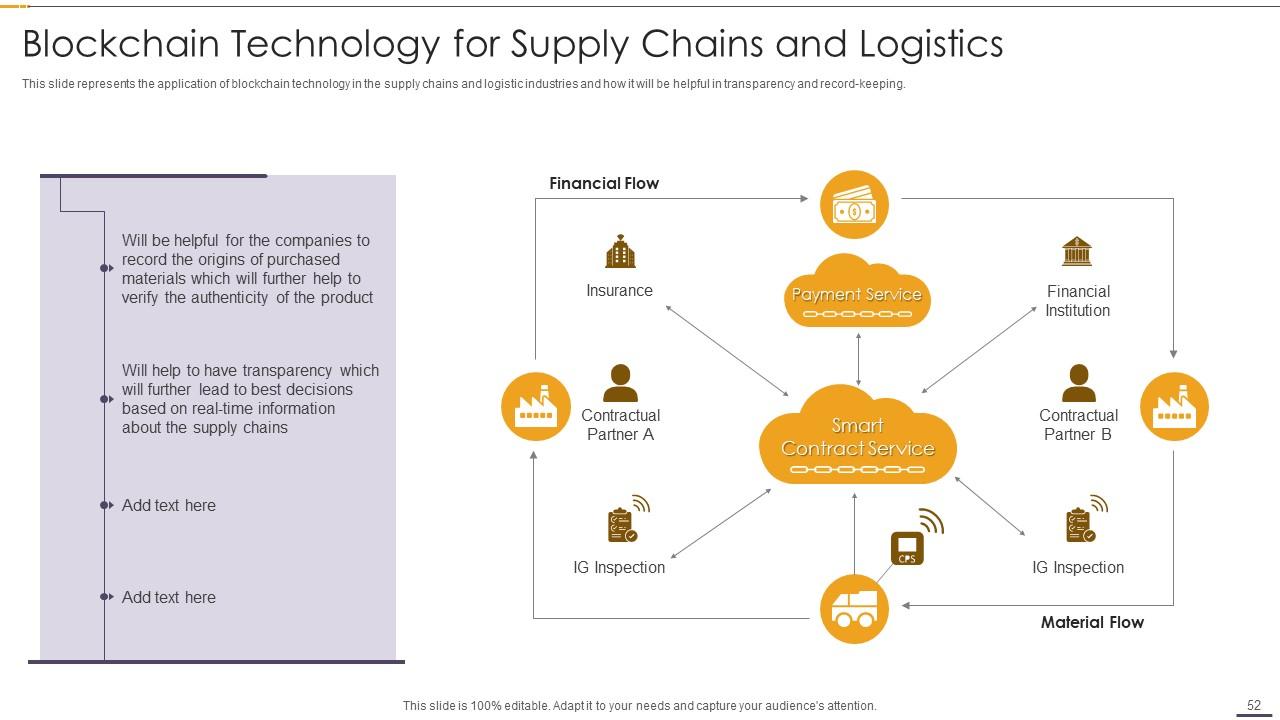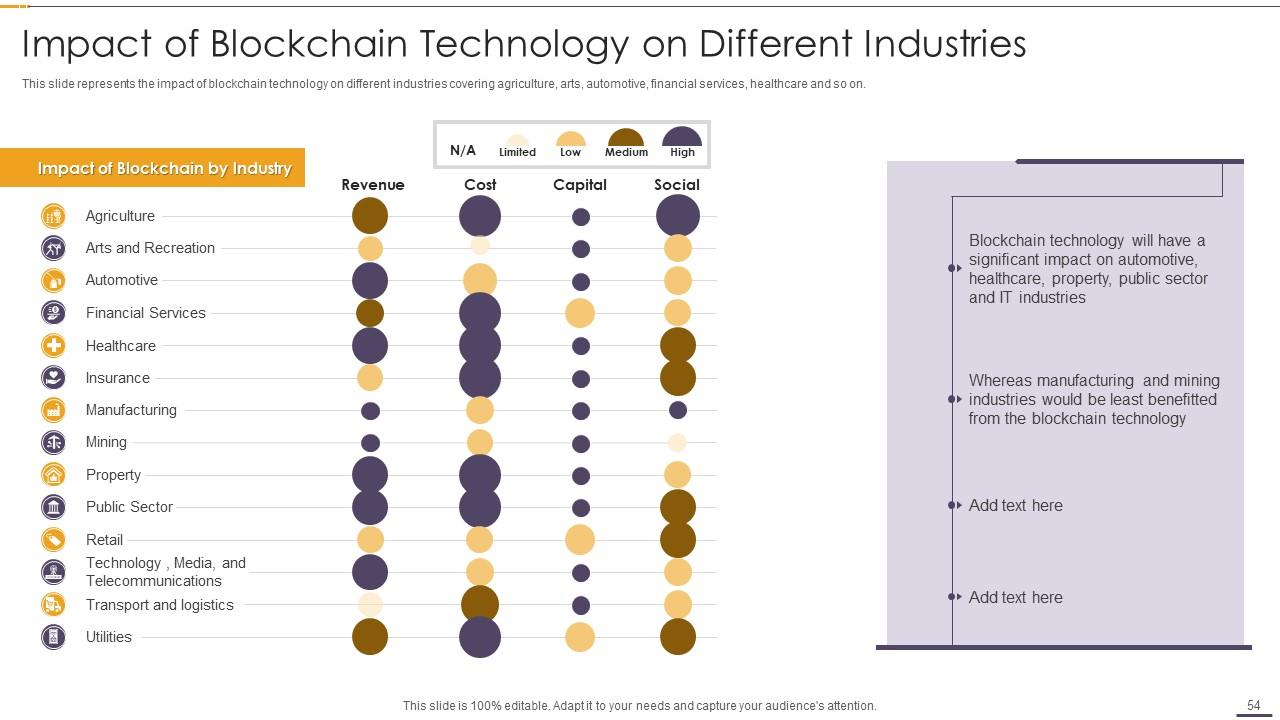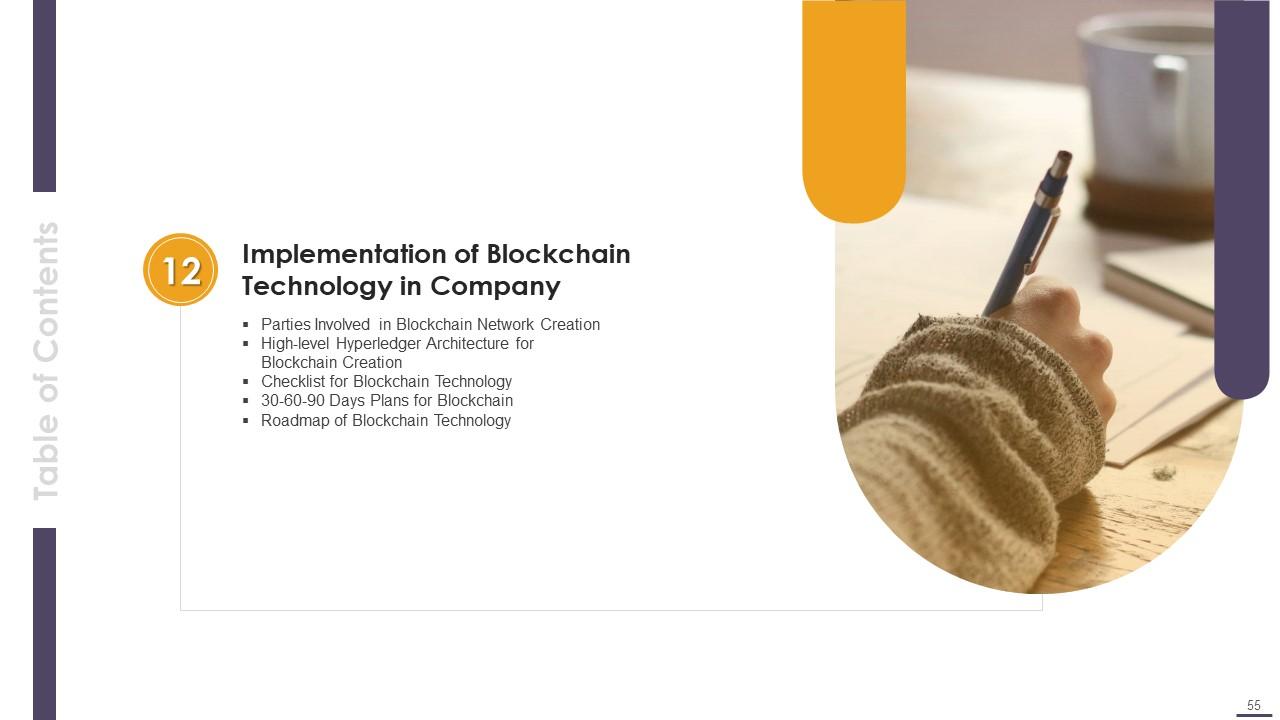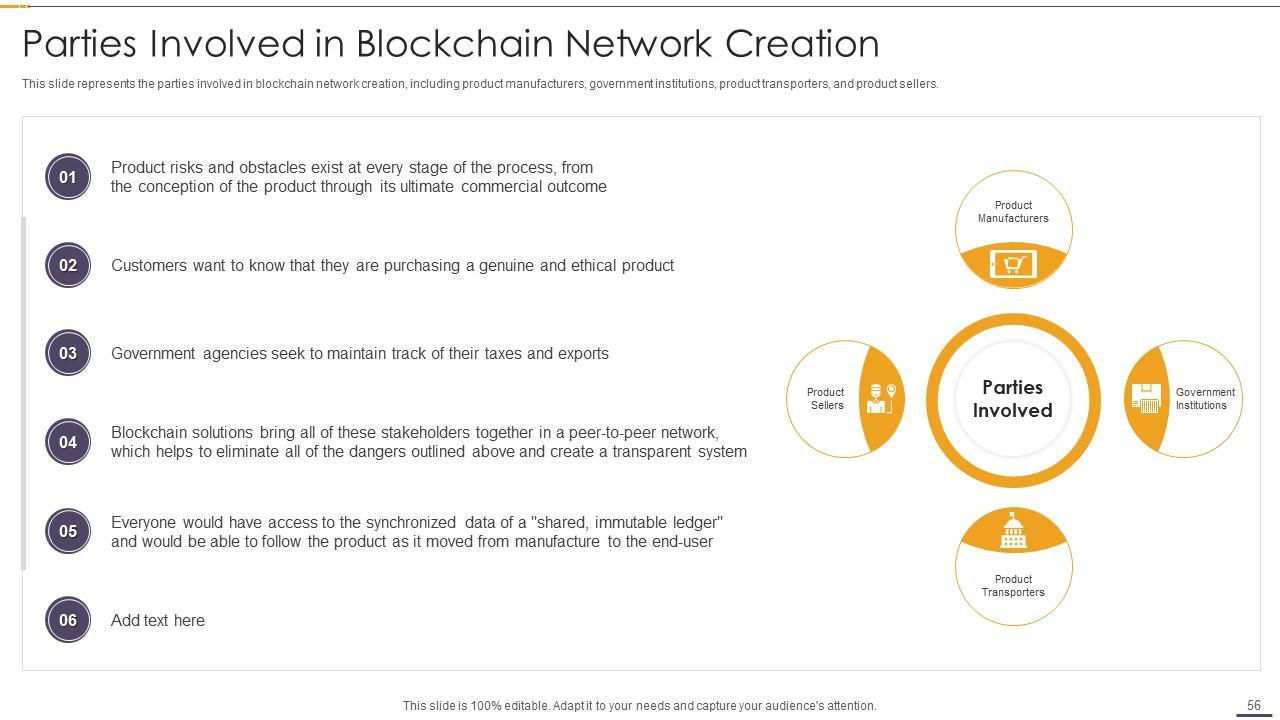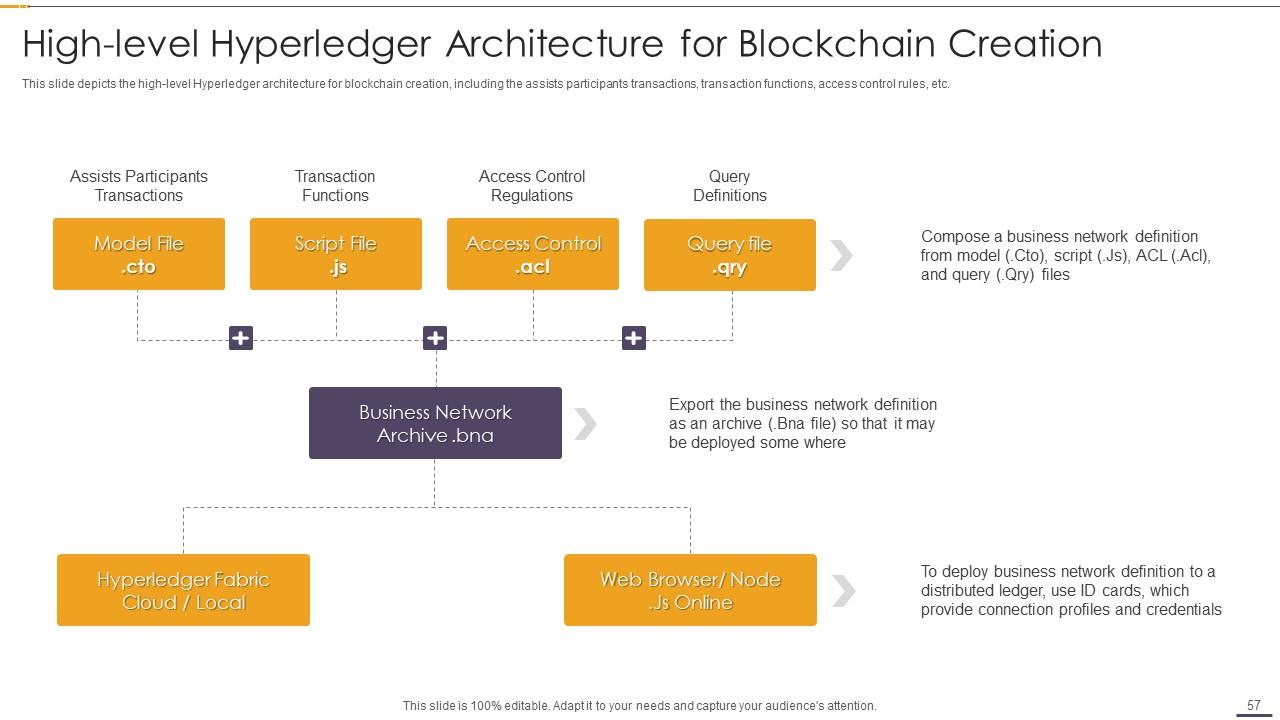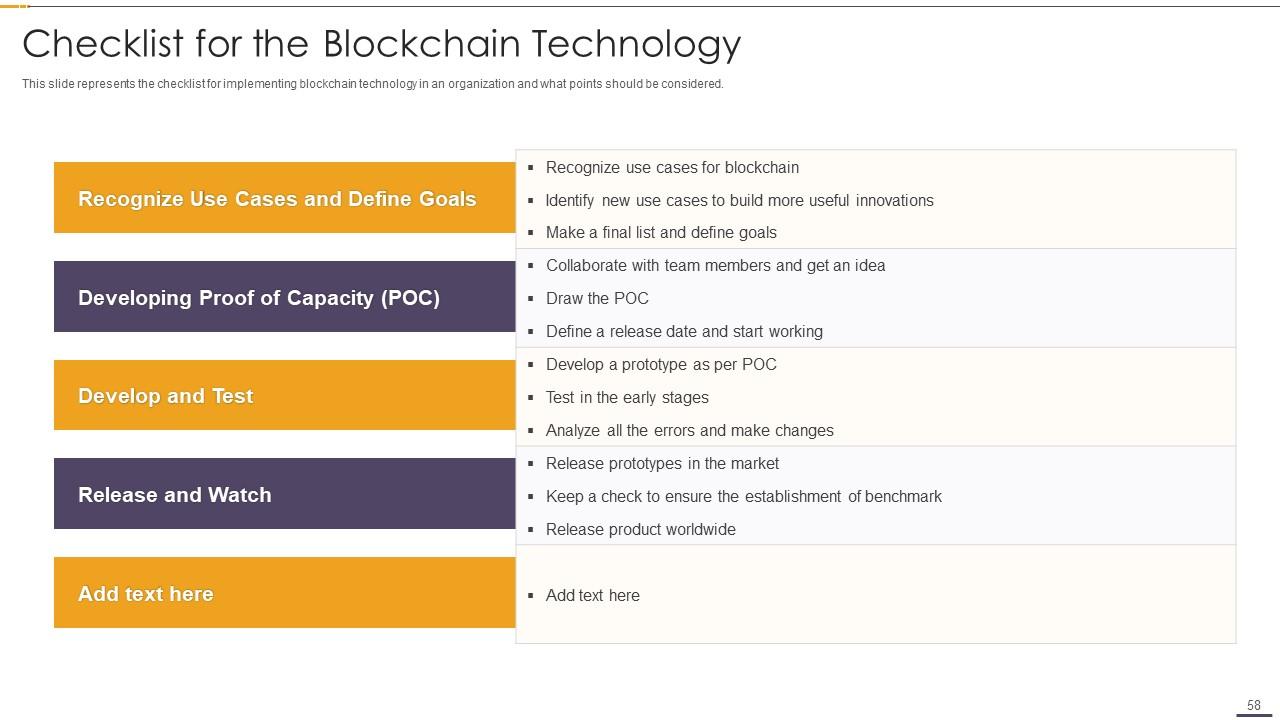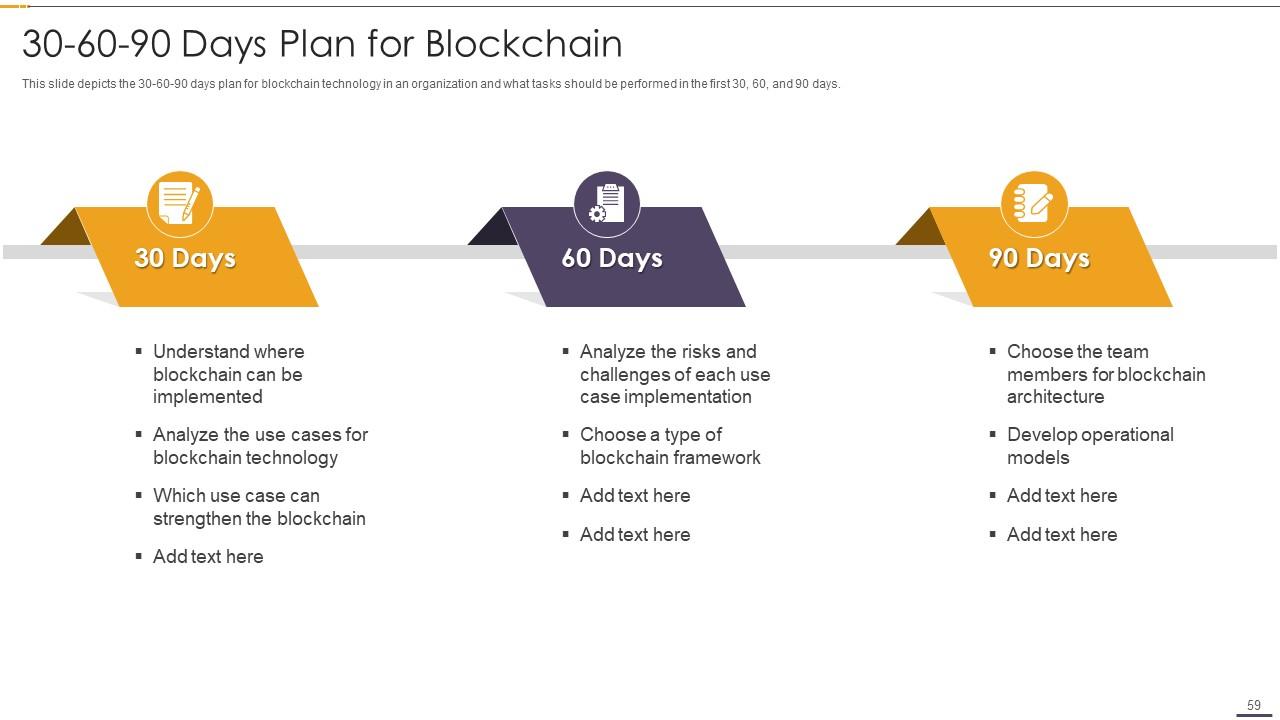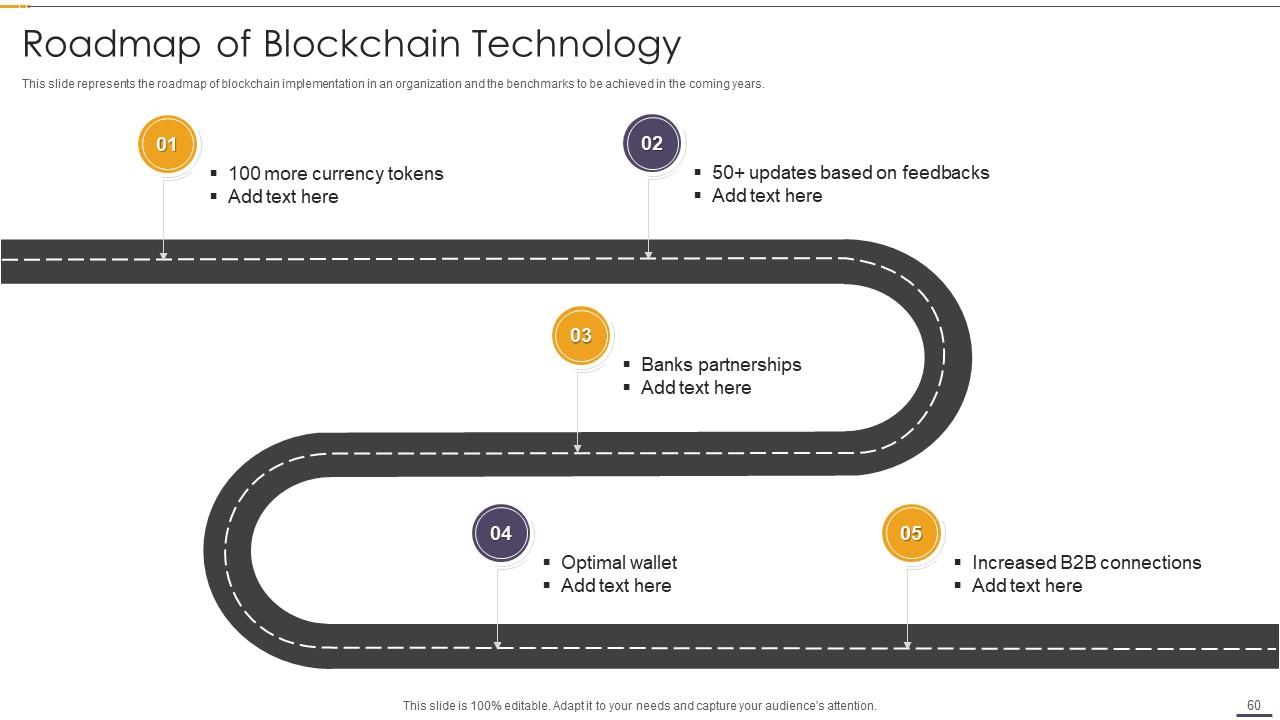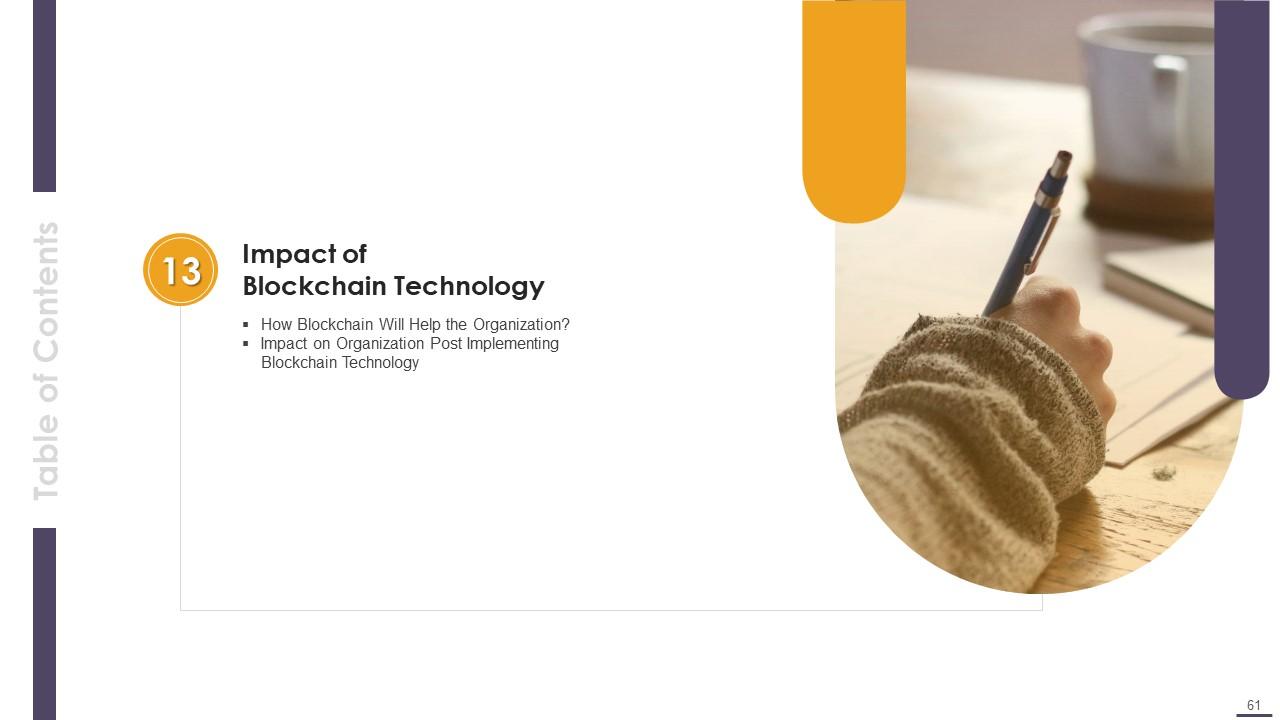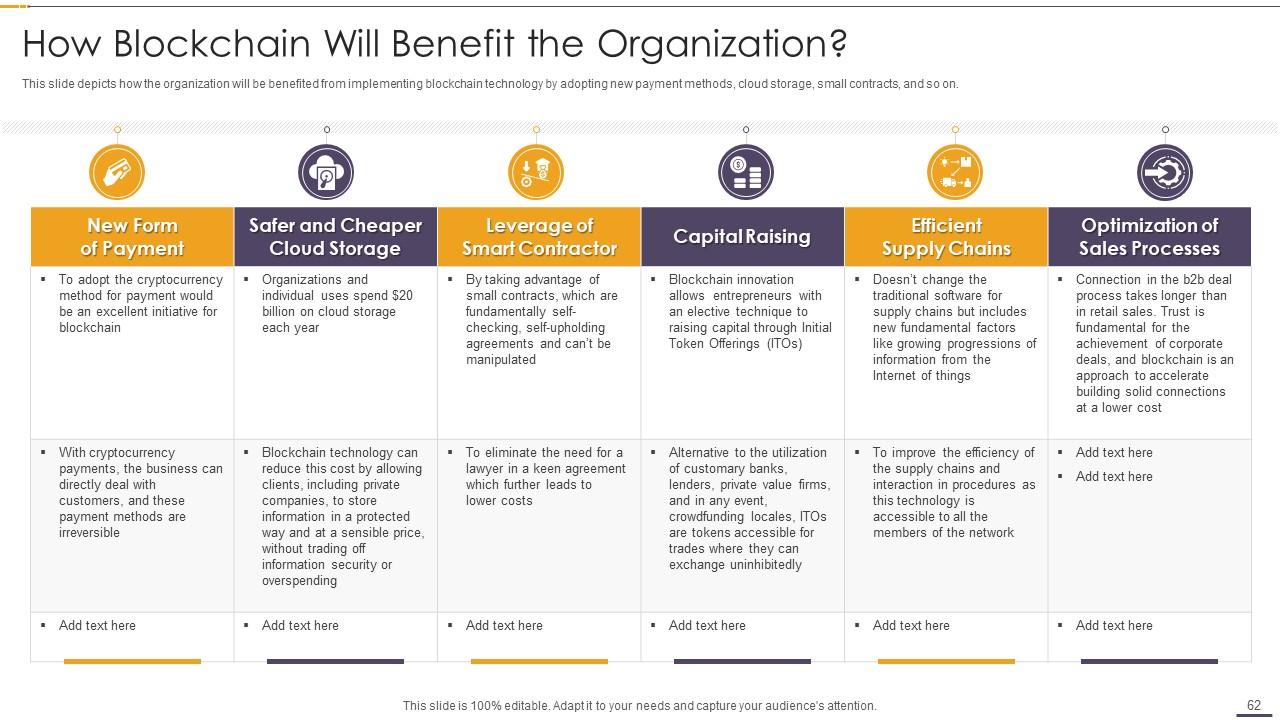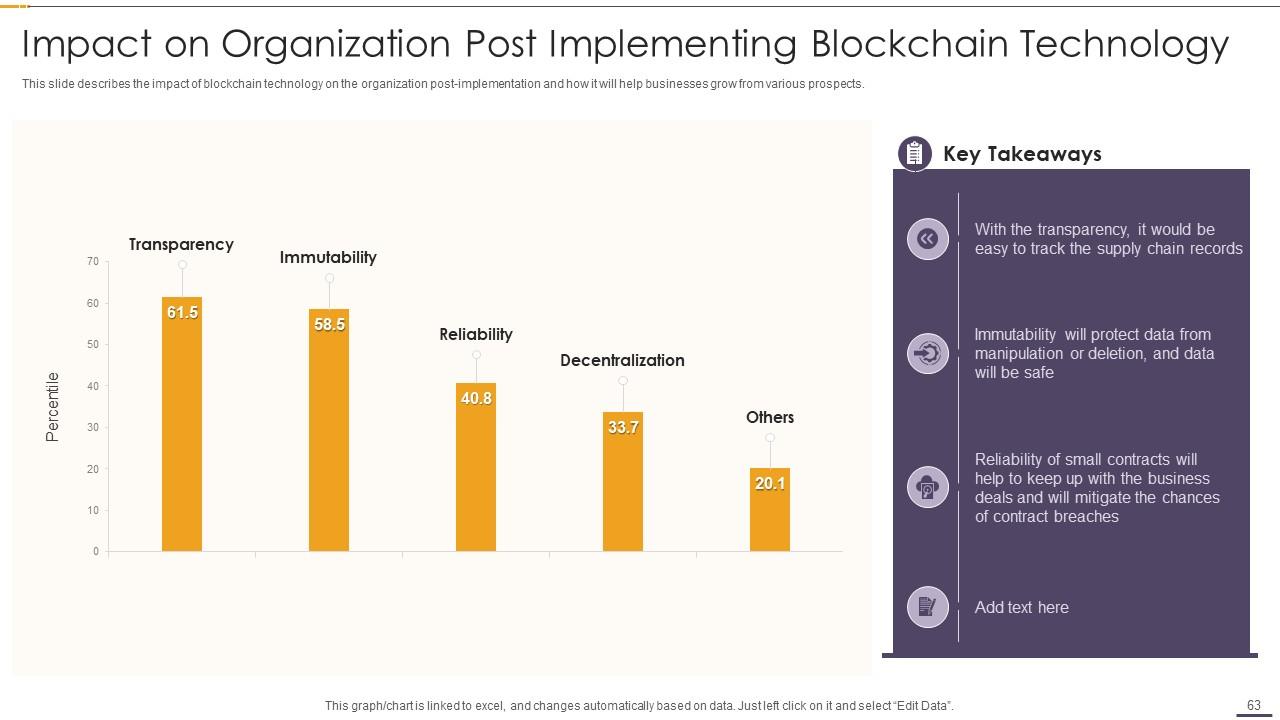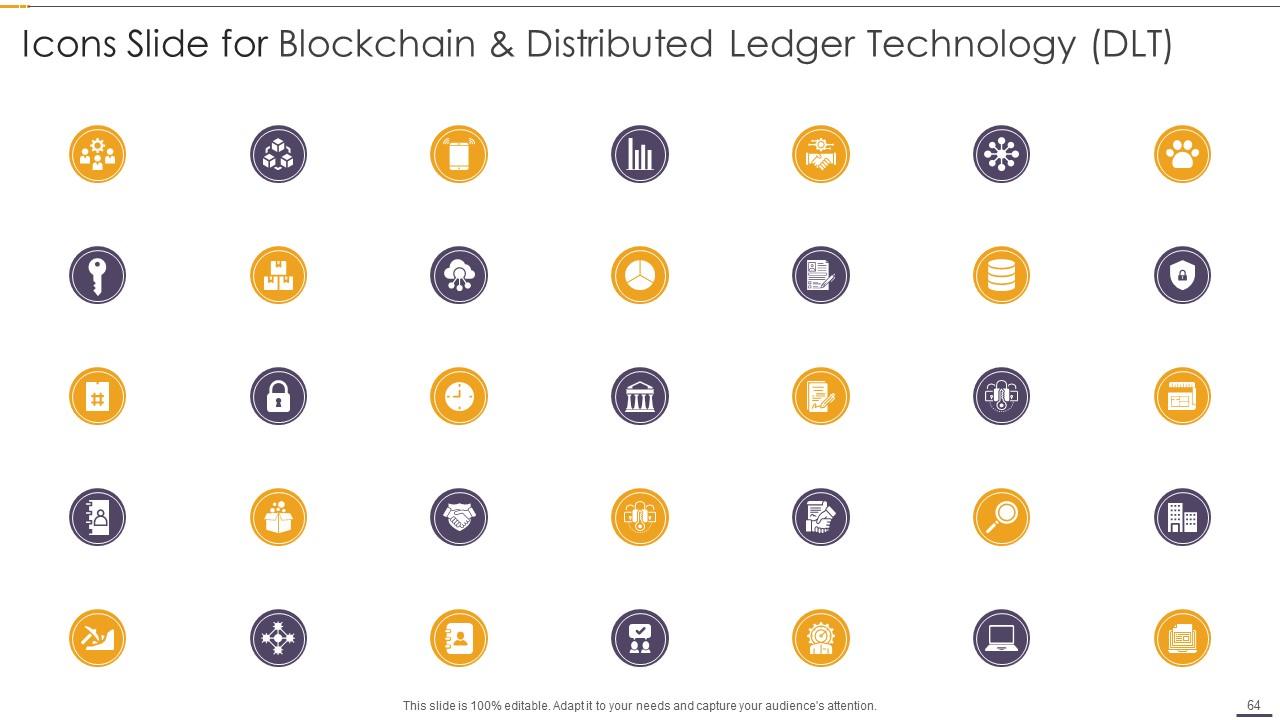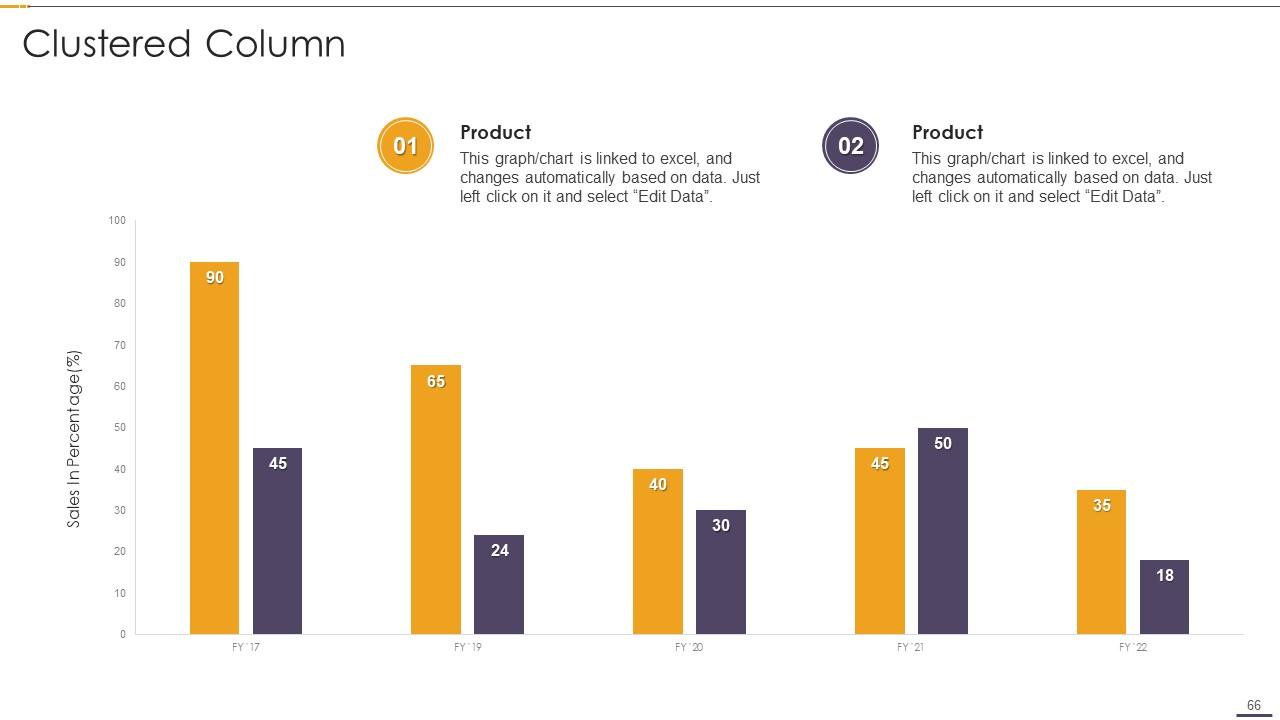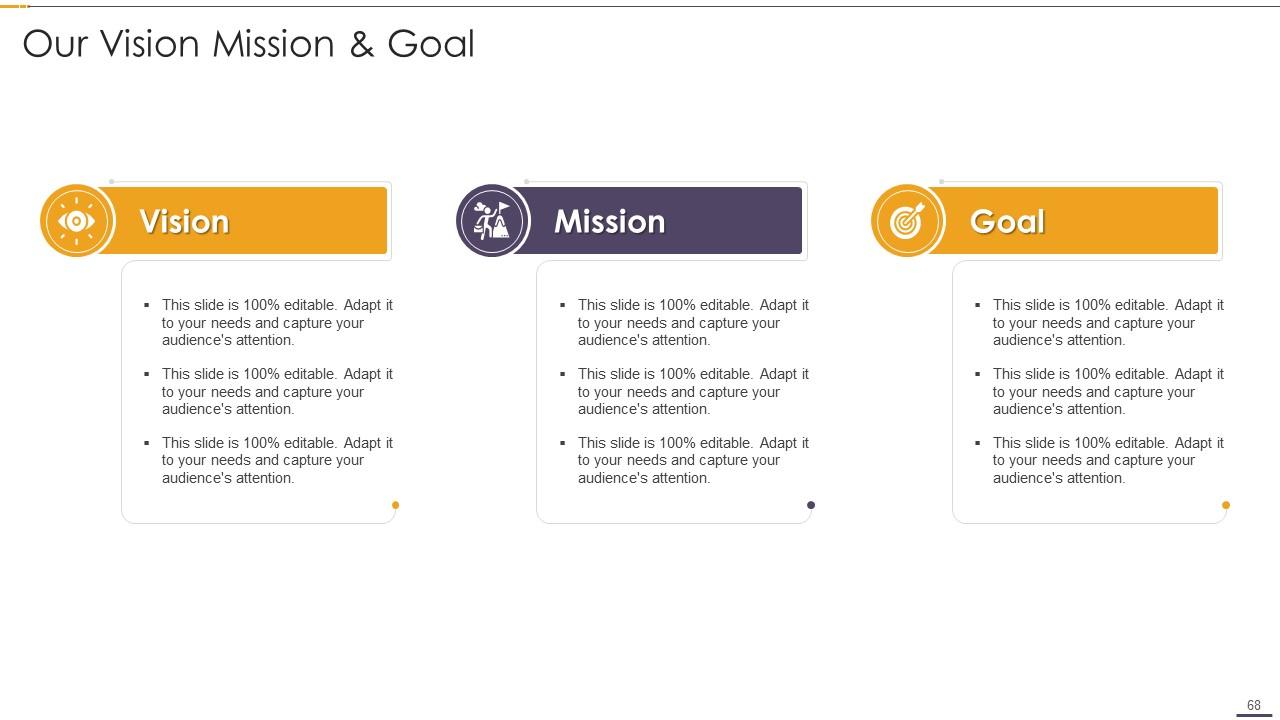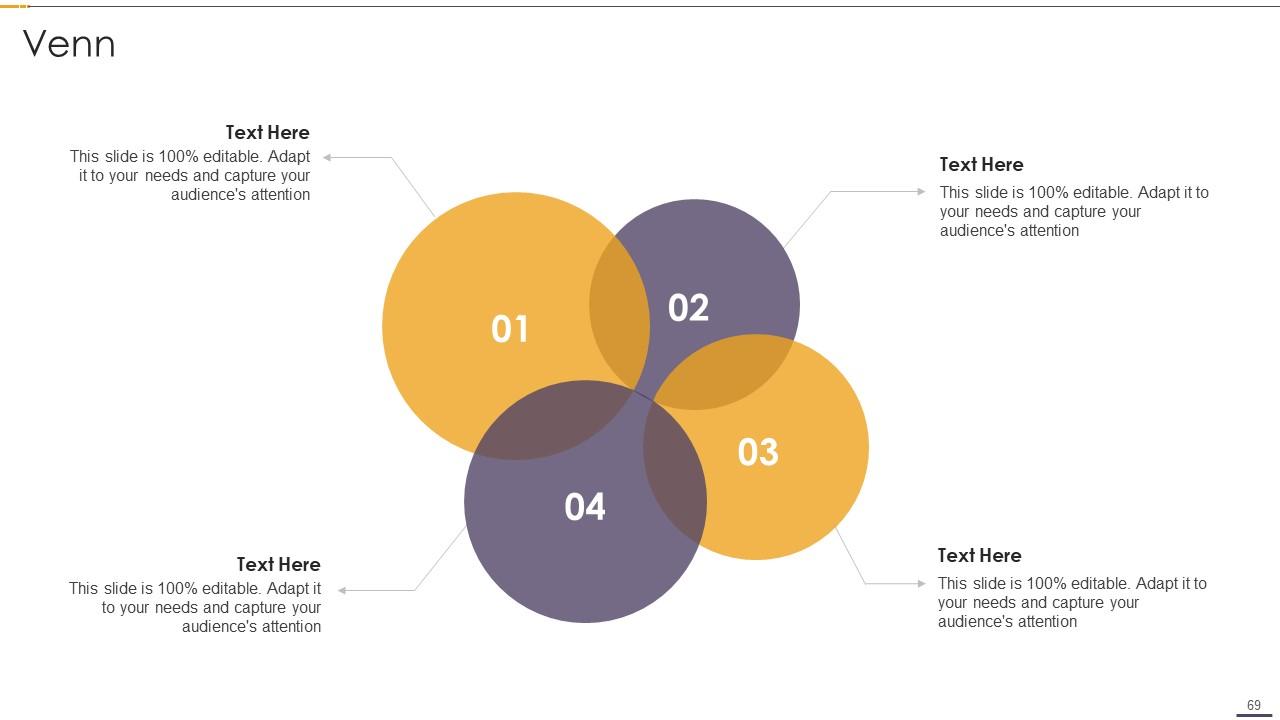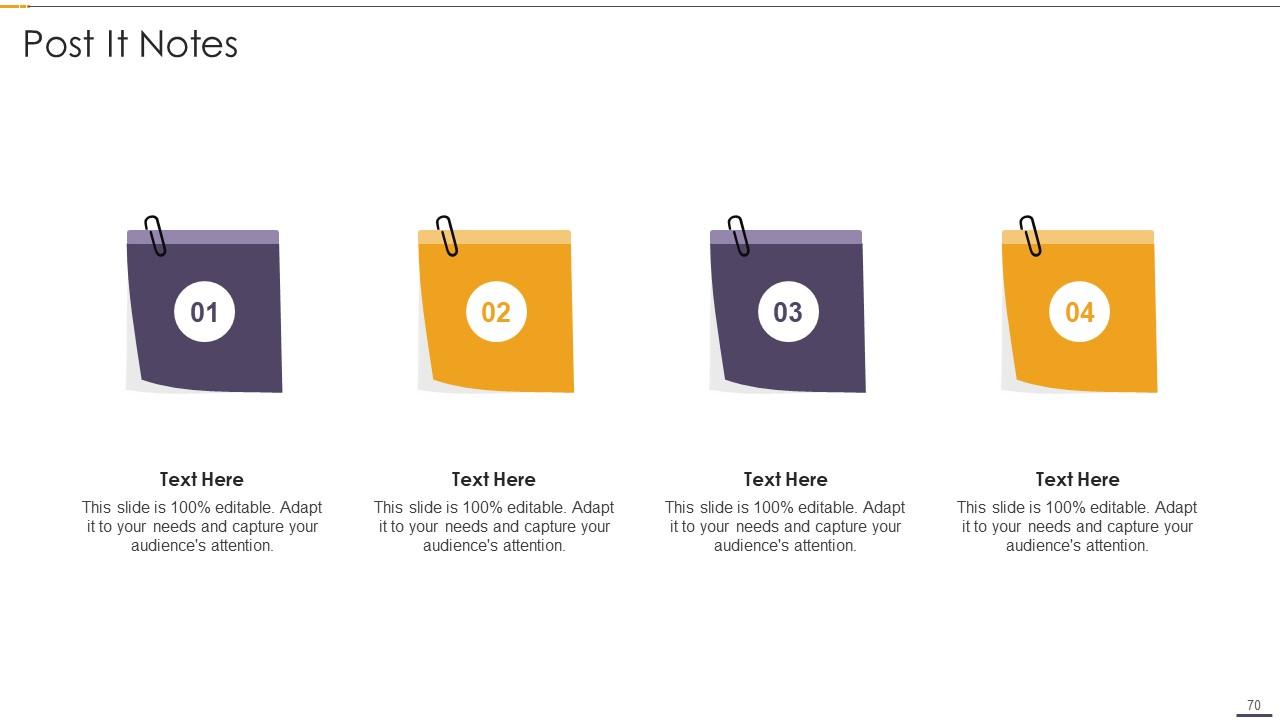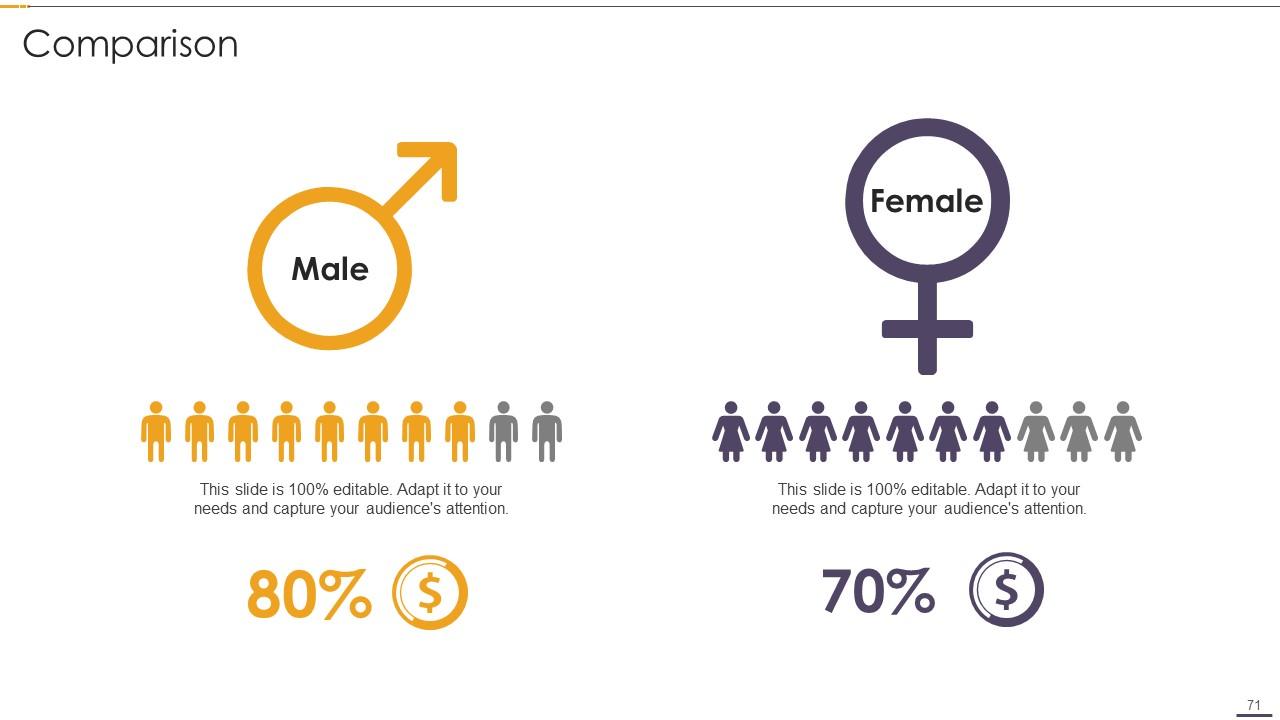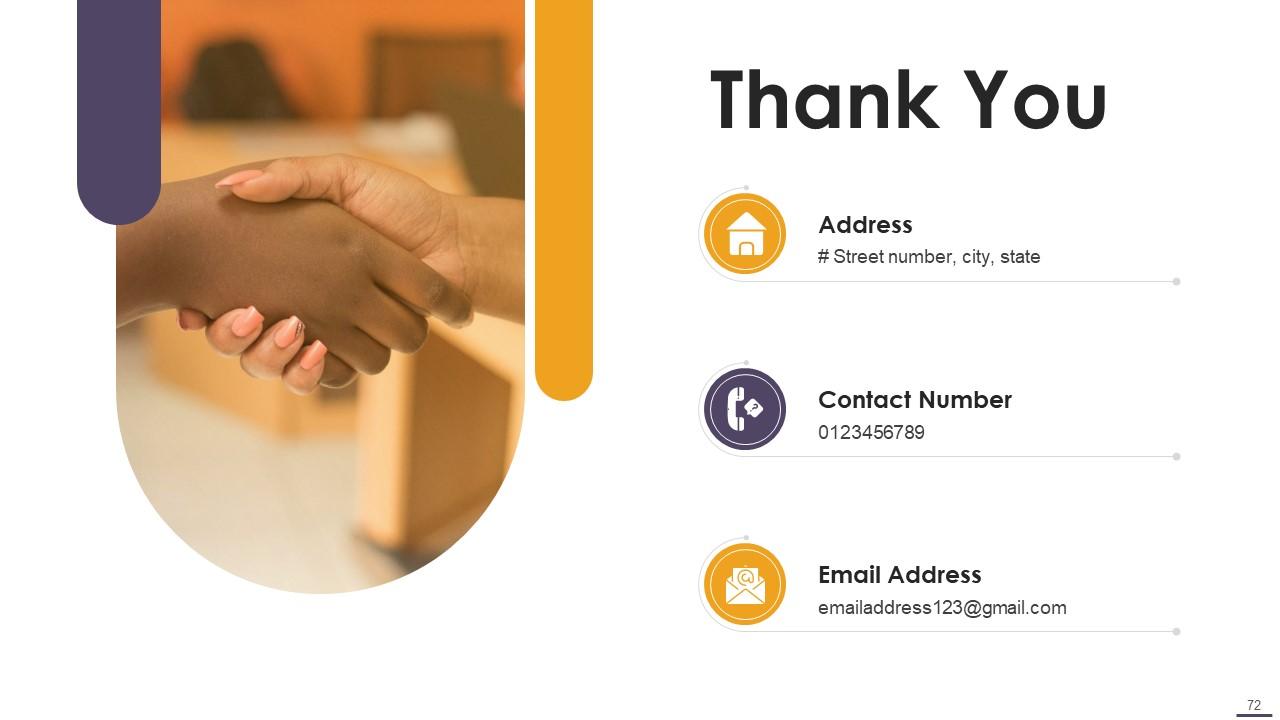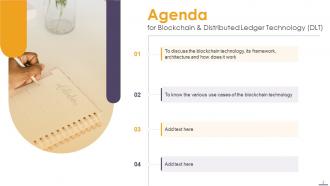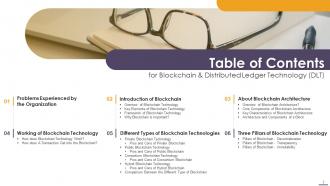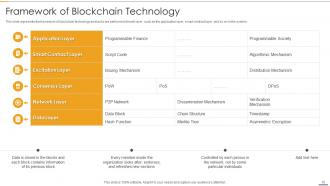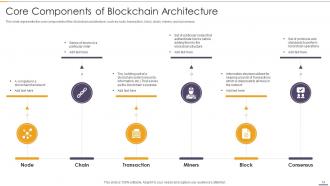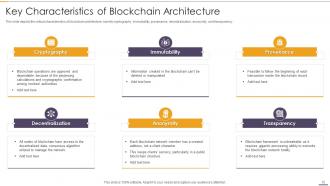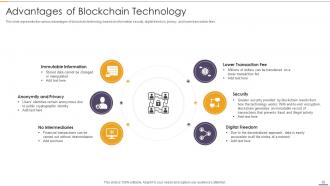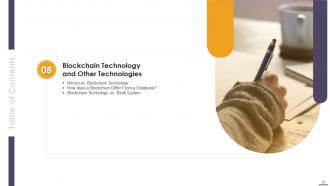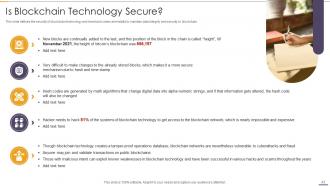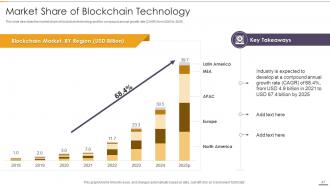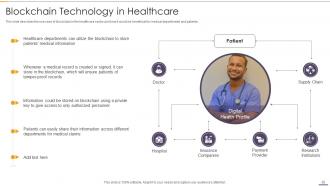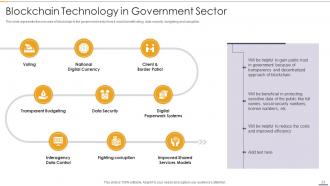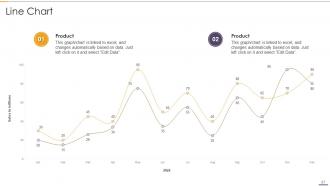Blockchain And Distributed Ledger Technology DLT Powerpoint Presentation Slides
Want to elucidate the importance of Distributed Ledger technology with information about its various features in your company. Here is a competently designed template on Distributed Ledger that lets you depict your organizations current situation by describing the problems that occurred in the past years. In addition, distributed ledger template showcases the core components of blockchain architecture and its characteristics. It also throws light on the components of each block in the blockchain technology along with its architecture. Moreover, this digital ledger presentation represents how a transaction gets into blockchain and details on different blockchain technologies such as private, public, consortium, hybrid, etc. Further, the cryptographic ledger template highlights details on the three pillars of blockchain technology, its pros and cons, bitcoin vs. blockchain technology, blockchain security, and the market of blockchain. Lastly, the blockchain deck showcases the application of blockchain in different sectors, the impact of blockchain technology, a checklist, a 30 60 90 day plan, and a roadmap for blockchain implementation. Our designers have created 100 percent customizable templates, keeping your convenience in mind. Press the download button to bag this fabulous deck today.
- Google Slides is a new FREE Presentation software from Google.
- All our content is 100% compatible with Google Slides.
- Just download our designs, and upload them to Google Slides and they will work automatically.
- Amaze your audience with SlideTeam and Google Slides.
-
Want Changes to This PPT Slide? Check out our Presentation Design Services
- WideScreen Aspect ratio is becoming a very popular format. When you download this product, the downloaded ZIP will contain this product in both standard and widescreen format.
-

- Some older products that we have may only be in standard format, but they can easily be converted to widescreen.
- To do this, please open the SlideTeam product in Powerpoint, and go to
- Design ( On the top bar) -> Page Setup -> and select "On-screen Show (16:9)” in the drop down for "Slides Sized for".
- The slide or theme will change to widescreen, and all graphics will adjust automatically. You can similarly convert our content to any other desired screen aspect ratio.
Compatible With Google Slides

Get This In WideScreen
You must be logged in to download this presentation.
PowerPoint presentation slides
Enthrall your audience with this Blockchain And Distributed Ledger Technology DLT Powerpoint Presentation Slides. Increase your presentation threshold by deploying this well-crafted template. It acts as a great communication tool due to its well-researched content. It also contains stylized icons, graphics, visuals etc, which make it an immediate attention-grabber. Comprising seventy two slides, this complete deck is all you need to get noticed. All the slides and their content can be altered to suit your unique business setting. Not only that, other components and graphics can also be modified to add personal touches to this prefabricated set.
People who downloaded this PowerPoint presentation also viewed the following :
Content of this Powerpoint Presentation
Slide 1: This slide introduces Distributed Ledger. State Your Company Name and begin.
Slide 2: This slide states Agenda of the presentation.
Slide 3: This slide presents Table of Content for the presentation.
Slide 4: This is another slide continuing Table of Content for the presentation.
Slide 5: This slide highlights title for topics that are to be covered next in the template.
Slide 6: This slide depicts the problems experienced by the organization by including the failure in the supply chain.
Slide 7: This slide highlights title for topics that are to be covered next in the template.
Slide 8: This slide defines the meaning of blockchain technology and its various features such as authentication, mining, wallet, etc.
Slide 9: This slide shows vital elements of blockchain technology, namely distributed ledger technology, immutable records, and smart contracts.
Slide 10: This slide displays framework of blockchain technology and tasks are performed at each layer.
Slide 11: This slide represents importance of blockchain technology based on factors such as immutability, transparency, etc.
Slide 12: This slide highlights title for topics that are to be covered next in the template.
Slide 13: This slide defines the architecture of blockchain technology and the parties involved in the blockchains.
Slide 14: This slide shows core components of the blockchain architecture, such as node, transaction, block, chain, etc.
Slide 15: This slide displays Key Characteristics of Blockchain Architecture.
Slide 16: This slide represents architecture of a block in blockchain technology by covering details of its components.
Slide 17: This slide highlights title for topics that are to be covered next in the template.
Slide 18: This slide presents the working of blockchain technology and the limit of the information that can be stored in blocks.
Slide 19: This slide depicts how blockchain technology works in the network by covering details of a task assigned.
Slide 20: This slide displays process of a transaction carried out from a blockchain network.
Slide 21: This slide highlights title for topics that are to be covered next in the template.
Slide 22: This slide shows private blockchain technology, participants of the private blockchain network, and the method to access data by the members of the network.
Slide 23: This slide represents the Pros and cons of the private blockchain framework based on factors such as speed, flexibility, trust-building, and security.
Slide 24: This slide depicts the public blockchain technology framework and how data is stored in the public blockchain.
Slide 25: This slide represents the pros and cons of public blockchain technology based on factors such as trustworthiness, security, etc.
Slide 26: This slide depicts the consortium type of blockchain technology and how members and nodes are arranged in this type of blockchain.
Slide 27: This slide shows Pros and Cons of Consortium Blockchain.
Slide 28: This slide defines the hybrid type of blockchain technology and how it is established by combining two different types of blockchain.
Slide 29: This slide depicts the pros and cons of the hybrid blockchain technology based on factors such as architecture, scalability and transparency.
Slide 30: This slide displays the comparison between the different types of blockchain, such as public, private, and hybrid.
Slide 31: This slide highlights title for topics that are to be covered next in the template.
Slide 32: This slide describes the decentralization process in blockchain technology and the benefits of decentralization.
Slide 33: This slide represents the first pillar of blockchain technology, transparency, and how users' identities remain hidden in this technology.
Slide 34: This slide depicts the immutability pillar of blockchain technology and how blocks are linked to each other.
Slide 35: This slide highlights title for topics that are to be covered next in the template.
Slide 36: This slide represents advantages of blockchain technology based on information security, digital freedom, privacy, etc.
Slide 37: This slide shows disadvantages of blockchain technology based on speed, energy, cost, scalability, etc.
Slide 38: This slide highlights title for topics that are to be covered next in the template.
Slide 39: This slide defines the difference between bitcoin and blockchain technology based on goal, trade, scope, strategy and status.
Slide 40: This slide depicts the various factors that make blockchain different from the database system.
Slide 41: This slide represents the comparison between blockchain technology and the bank system.
Slide 42: This slide highlights title for topics that are to be covered next in the template.
Slide 43: This slide presents the security of blockchain technology and how hash codes are helpful to maintain data integrity.
Slide 44: This slide defines the various risks involved in public blockchains, such as 51% attacks, double spending, and proof of work.
Slide 45: This slide represents the challenges involved in public blockchains classified as basic risks, implementation risks, etc.
Slide 46: This slide highlights title for topics that are to be covered next in the template.
Slide 47: This slide describes the market share of blockchain technology and the compound annual growth rate (CAGR) from 2020 to 2025.
Slide 48: This slide highlights title for topics that are to be covered next in the template.
Slide 49: This slide depicts the use cases of blockchain technology in the banking and finance sector.
Slide 50: This slide describes the use case of blockchain in the healthcare sector and how it would be beneficial for medical departments.
Slide 51: This slide depicts the use case of blockchain in smart contracts and how beneficial and less time-consuming it would be.
Slide 52: This slide shows Blockchain Technology for Supply Chains and Logistics.
Slide 53: This slide presents use case of blockchain in the government sector how it would benefit voting, data security, budgeting and corruption.
Slide 54: This slide shows Impact of Blockchain Technology on Different Industries.
Slide 55: This slide highlights title for topics that are to be covered next in the template.
Slide 56: This slide represents Parties Involved in Blockchain Network Creation.
Slide 57: This slide shows High-level Hyperledger Architecture for Blockchain Creation.
Slide 58: This slide presents Checklist for the Blockchain Technology.
Slide 60: This slide represents the roadmap of blockchain implementation in an organization and the benchmarks to be achieved.
Slide 61: This slide highlights title for topics that are to be covered next in the template.
Slide 62: This slide depicts how the organization will be benefited from implementing blockchain technology by adopting new payment methods.
Slide 63: This slide presents Impact on Organization Post Implementing Blockchain Technology.
Slide 64: This slide displays Icons for Distributed Ledger.
Slide 65: This slide is titled as Additional Slides for moving forward.
Slide 66: This slide provides Clustered Column chart with two products comparison.
Slide 67: This slide describes Line chart with two products comparison.
Slide 68: This is Our Mission slide with related imagery and text.
Slide 69: This slide depicts Venn diagram with text boxes.
Slide 70: This slide shows Post It Notes. Post your important notes here.
Slide 71: This is a Comparison slide to state comparison between commodities, entities etc.
Slide 72: This is a Thank You slide with address, contact numbers and email address.
Blockchain And Distributed Ledger Technology DLT Powerpoint Presentation Slides with all 77 slides:
Use our Blockchain And Distributed Ledger Technology DLT Powerpoint Presentation Slides to effectively help you save your valuable time. They are readymade to fit into any presentation structure.
FAQs
Blockchain technology is a decentralized, digital ledger technology that allows multiple parties to have a shared and synchronized version of a database without the need for intermediaries.
The core components of the blockchain architecture include nodes, transactions, blocks, and chains.
The different types of blockchain technology include public, private, consortium, and hybrid.
Some advantages of using blockchain technology include increased information security, improved digital freedom, and enhanced privacy.
Blockchain technology can be used in various sectors, such as banking and finance, healthcare, smart contracts, supply chain management, and the government sector.
-
I faced no difficulty while searching for the slide I wanted. Honestly, the website’s interface is easy to use and can be navigated easily!
-
Thank you SlideTeam for such an excellent service.





